Reading the Terroir at Ocean Eight
Winemaker Mike Aylward gives us insight to some of the evolutions in Ocean Eight’s vineyard architecture over two decades of winegrowing on the Mornington Peninsula.
We gathered every Australian purpose-built chillable red that we could find and set our expert panel the task of finding the wines that compelled the most. All wines were tasted blind, and each panellist named their top six wines. Below are the wines that made the panellists’ top-six selections from the tasting.
Our panel: Meg Brodtmann MW, head of Education and Global Outreach at Rob Dolan Wines; James Scarcebrook, Winemaker Vino Intrepido; Nicola Reid DipWSET, Manager The Spanish Acquisition; James Vercoe DipWSET, Sourcing Manager Wine Coles Liquor Group; Nicky Riemer, Head Chef Bellota; Lyndon Kubis owner of several wine bars and DITC online retailer; Justin Purser, Chief Winemaker Stonier; Mitch Sokolin, Winemaker Eleven Sons and Owner Manager Gray and Gray, Northcote. All wines were tasted blind.
This was Vercoe’s top wine of the tasting, coming one spot back for Scarcebrook and also featuring in Purser’s top-six list. “This was my wine of the day,” wrote Vercoe. “It showed good fruit quality of damson plum, quandong, watermelon and red-fruit roll up with a lovely juiciness. Importantly, it also showed restraint. The bright fruits and red floral notes were tempered by a cola root mineral character and a crunchy wild thyme herbed edge. Chilling the wine brought out the vibrant fruit but also a firm, yet subtle, brick-dust tannin that was both savoury and refreshing and complemented the blood orange like-acidity. Most of all, this wine was simply delicious to drink. End of story.” “Bright and pretty enticing fruits, a bit of floral as well,” wrote Scarcebrook. “Bright, bold but super light and drinkable, a little bit of crunch, lovely and dry but generous. Crunchy red fruits (raspberries, cherries and strawberries) but dry and a hint of savoury. Super light and just enough to be a red wine rather than a rosé. Super smashable.” Purser wrote, “herbaceous spice and watermelon combined with a salivating finish equals a very tasty chilled red.”

This was the wine of the day for both Purser and Kubis. “Lured in by the attractive magenta tinged haze and beads of condensation lacing the glass, this doesn’t disappoint, with lifted red flowers, satsuma plums, black olives and pomegranate – increasing and unfolding as the wine warms,” wrote Purser. “The savoury red fruit flavours combine with a crunchy blood orange acidity and creamy tannins. A delicious wine.” “Wow,” wrote Kubis. “Lots going on straight away, aromatically expressing just-ripe strawberry, potting mix and a wet earth meets crushed rock character. Medium in body and displaying seamless texture, it is silky and supple, filling the whole mouth with forest fruit flavour supported by a subtle savoury frame. I love this wine for its sheer drinking pleasure, wearing the chill extremely well. Pure, uplifting refreshment!”
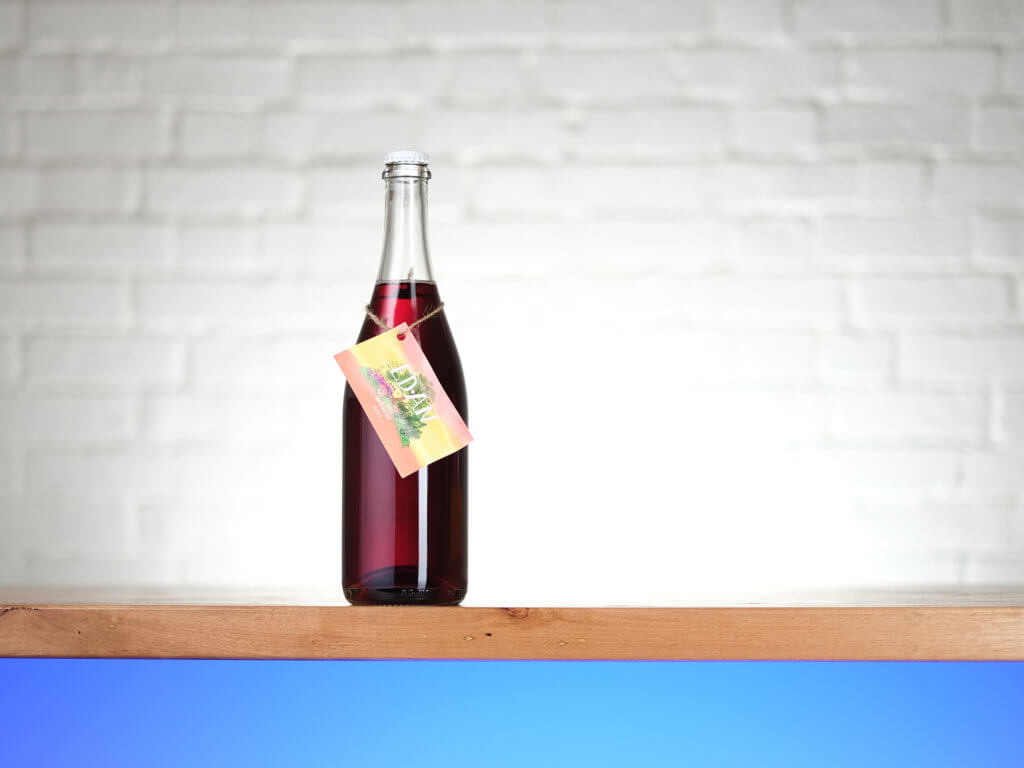
“I didn’t have to deliberate much on this one, as it charmed immediately and continued to impress even retesting it an hour later,” wrote Sokolin, giving it his top spot for the tasting. “As a gentleman with a prominent nose, I do often gravitate to wines that impress aromatically and this one did so. One of the few aromatic reds in the line-up with huge florals and blossom coming out of the glass even straight out of the fridge. Almost muscat like, but in red. It was plush and plummy to drink. It was good cold, it was good warmer, and probably would be fine on a hot summer’s day in the park. It appeals to me and I’m confident it would illicit a few ‘what is this wine!?’ from my friends.” Kubis and Reid also gave it a top-six finish. “This has a vivacious aromatic purity that’s bursting with fresh fruit,” wrote Kubis. “Fresh raspberries are the primary fruit flavour here and there are lots in aromatic form. Brisk and lively acidity in the mouth, it is loooong and finishes with mineral crunch. Thirst quenching and energising.” “Wondrously aromatic and seductive,” wrote Reid, “with perfumed floral aromas of violet, lavender, and rose petal, with interwoven notes of pomegranate and hibiscus tea. The brightness and freshness of fruit is persistent, with lovely blood orange acidic freshness and a refined structure.”

“I fell for this wine hook, line, and sinker!” wrote Reid, giving this her second to top wine of the tasting. “Initially lured in by the charisma of its well-defined blueberry, fig and elderberry notes, the palate engages a higher gear; flesh of a ripe blood plum envelops the wine, softening into the rounded palate, which is beautifully punctuated by the lift of blood orange peel and pink grapefruit-like acidity, which is both refreshing and cleansing.” The wine was also given a top-six finish from three other tasters. “A ruby in the rough,” noted Purser. “Layered aromatics starting with bresaola and blackcurrants then morphing towards plums and strawberries. The dark fruit flavours are rounded and fresh with long silky tannins. A very appealing and refreshing drink.” “Juicy and slurpable, it has a slippery texture that I love for this style of drinking,” wrote Kubis. “Complex enough to maintain interest but simple enough to remind you that this is a conduit to better enjoying your environment, not just the wine but good friends and loved ones.” Sokolin found it, “Savoury, fine-framed and leaves you with the feeling you’ve just had a very dry white vermouth, which is a good thing. We should be drinking more vermouth, but if you don’t there’s always this.”

“I like this one quite a lot,” wrote Scarcebrook, giving it his top spot. “It’s much fresher and lighter than a lot of the wines so far, but it works exceptionally well as a chilled red. The tannins are bright with just enough grip, the acidity is delightful and balanced with the crunchy red fruits (raspberries and rhubarb) – decent amount of length for the style too.” Sokolin also had it in his top six. “A wine that probably has a lot of doppelgängers in this tasting and on the shelf,” he wrote. “Going back and looking at this wine again, alongside similar contestants, I found it to be like the others but with the volume turned down a bit. It’s super perfumed, with a beautiful carbonic fruit nose to it, without being overbearing. Light tannin and likely a bit less alcohol than some of the others, or at least it felt that way. Snappy on the palate. Bass, mids and treble in check. And that’s everything to me, particularly cold.”

This was Vercoe’s second to top wine of the day, with Riemer having it one place further back. “The wine has this vivid ruby-stone colour and aromas of chinotto, crushed pomegranate, quandong and fields of red flowers,” wrote Vercoe. “There is a delicate structure and inert prettiness to the wine, which is framed by red apple skin phenolics and a powdery, fine concrete-dust tannin. An almost effortless structure feels as if it is holding everything perfectly in place with consummate ease and provides a delicate flow through the palate. The ruby grapefruit acidity is vivid, but not overwhelming, and brings a freshness and salivating quality to the finish which leaves you with lingering memories of Belgium cherry ale, rock rose and red vein sorrel. The complex prettiness and balance of acid, tannin and refreshing chill of the wine make it an ideal, and versatile, food partner; think duck terrine, charcuterie, steak tartare, bánh mì, barbecue, seared tuna, roast pork, the list goes on…” “Another classic, bright chilled red, almost sherbet like,” wrote Riemer. “If you had this with a perfectly roasted chicken filled with chunks of garlic, butter and thyme, I’m pretty sure you would be in a very happy place. I think this was another beauty with a fruit-forward palate, and I love this kind of cold red wine with the gorgeous caramelisation of roasted chicken skin.”

This made the top-six lists of Sokolin, Scarcebrook and Brodtmann. “I think we speak about fruit quite a bit, especially in this category, but to me, wine, being a product of fruit, should generally have an easy time of showing some sort of fruit profile,” wrote Sokolin. “It’s savoury aspects that often drive a wine into the realm of interest. This glass certainly had a darker cherry or plum fruit profile but gave you a nice white or black pepper note to think about. It felt like shiraz to me, but in a friendly weight. Carpet matched the curtains. Good, dense fruit weight, gentle tannins and milder acidity rewarded for being in the fridge. “Quite herbal and spicy, pepper and juicy blackberries,” noted Scarcebrook. “Generous, vibrant and expressive on the palate, dark berries complementing pepper notes, not overt so it works well as a chilled red. Really delicious and supple tannins.” Brodtmann called it, “The wine you want when you don’t want to think but just want to drink. A little subdued initially but it opened up with wafts of black cherry, liquorice and raspberry lollies. The fruit offering here is pure candy store with softish, mouth-filling tannins that move to a chalky finish. Kind of an in-between style with enough grunt to demand food – spaghetti and meatballs would be my pick.”

This topped the tasting for Riemer: “This came across as the classic chilled red right off the bat for me,” she wrote. “I immediately got a vibrant, lean and yet fruit- driven wine, something I wanted to drink with grilled lamb and spiced olives. It was the wine I felt would be that great ‘grilled meats wine’ – the one you take to dinner at the Greek restaurant or even enjoy at the yakitori grill. There was a light smoky spearmint to the finish of the wine with nice tannin that I could enjoy with a good roast lamb studded with anchovies and rosemary. This wine would be my favourite to take to the barbecue, too, because it is a good allrounder, I felt that as it would warm up it would still go well with cheese like a young Pecorino or the creamy saltiness of an Ossau Iraty.” Vercoe also had it in his top six. “A blood plum colour with a bouquet of redcurrant, Davidson plum, red apple and yellow grapefruit,” he wrote. “What made this wine stand out to me was the way the temperature reacted with tannins to create a moreish-ness that is screaming out for food. Chilling brought the tannins right to centrestage and proudly displayed their quality, surrounding a core of red florals and forest berries that balanced by a fresh pomelo acid line… Bring on the roast duck.”

Scarcebrook had this in his top three, while it was just outside Purser’s. “Nice and clean, deeper fruits (blackberries and blueberries) and some whole bunch stemmy notes,” wrote Scarcebrook. “Juicy, fresh, vibrant, a bit poppy but still savoury. Showing some interesting coffee notes on second look, really opens up nicely on the palate, very drinkable and interesting, refreshing but generous.” “Beneath the scarlet fog there is toasted spice, blackberries and olive tapenade,” noted Purser. “Deep, rich, slippery fruit combines with the slaty reductive texture to leave a fine and bright finish.”

This was Reid’s top wine for the tasting. “An entrancing, expressive profile with rosehip, loganberry and morello cherry in full focus, with blood orange peel and honeybee tomato occupying the middle ground; by no means understated. The wine’s refreshing acidic lift, along with the velvet-smooth palate leaves us with a beautifully harmonious final cadence. This wine demonstrated its unique ability to handle its sour and savoury qualities in a positive way while ‘under the influence’ of the chill.”
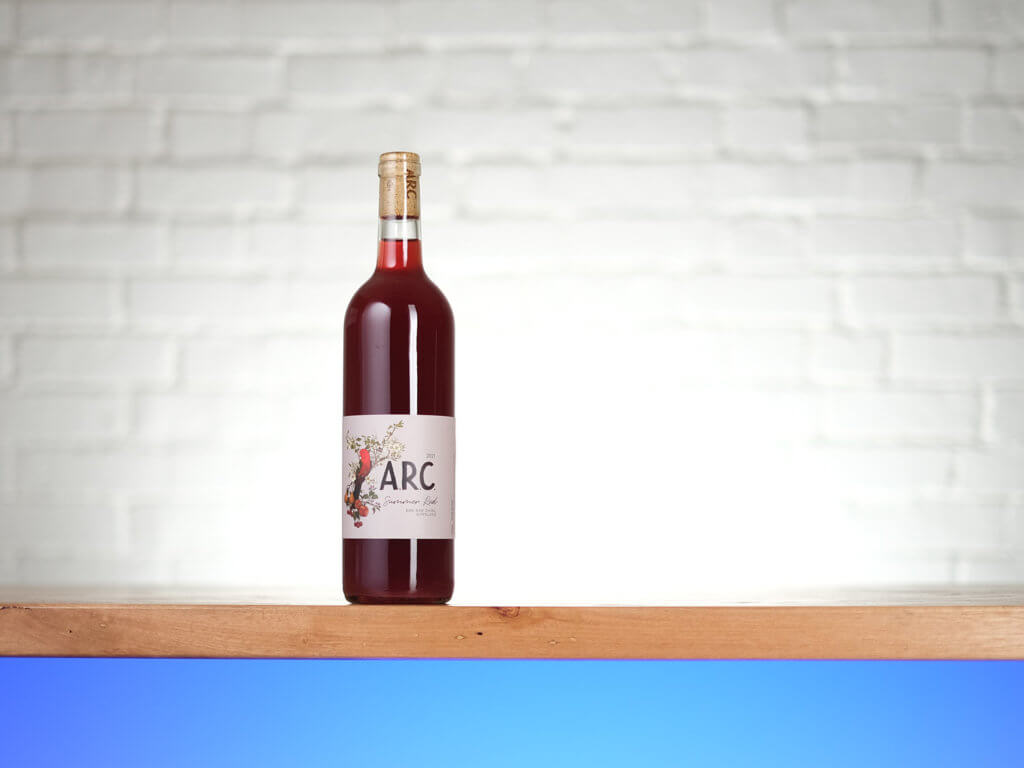
This was Brodtmann’s top wine for the tasting. “Hands down the winner for fruit appeal alone,” she wrote. “Cloudy in appearance but definitely not cloudy, or obscured, in the fruit profile. Raspberry, cherry, strawberry and some Christmas spice jump from the glass. Hints of citrus with grapefruit and mandarin and a touch of funk. Chewy tannin and slightly spritzy, this is a moreish wine which is crying out for a long Sunday brunch with mushroom toast.”

Three tasters placed this in their top-six selections. “Vibrant and expressive, this wine dances between a blue and red fruit spectrum,” wrote Reid. “Fig, cranberry, rhubarb and damson plum are complemented by a floral lavender and violet overlay. The palate releases the most refreshing red apple crunch sensation, concluding in a lingering tomato leaf outro.” “A bit more crunchy and slightly underripe black fruit notes on the nose, but also a hint of black olive,” noted Scarcebrook. “Darker, drier fruits on the palate, savoury texture that I think works well with the chill… Very generous and expressive, deep but balanced. A little bit wild but in a delicious way.” Purser saw, “A touch of haze within the bright red hue. Spiced black fruits dusted with some herbaceous notes. Rich rolling flavours become more high-toned as it warms up. Layered, refreshing and moreish.”

Brodtmann had this second on her list of top wines for the day. “This wine was more in the light, dry red spectrum and demonstrated the diversity of styles in this category,” she wrote. “There is oak, but it works really well, as it gives a vanilla perfumed lift to the aromas. Cherry clafoutis, cake batter and cherry strudel are not your usual tasting notes but perfectly reflect what is happening in the glass. A gruntier style of wine with the spicy oak following through on the palate. This one needs food – anything with duck to go with the cherry bomb. Peking duck, anyone?”

Riemer had this in second place for the tasting. “The deep gorgeously plummy colour of this wine had a lovely smoky and plush palate,” she wrote. “Even nice and chilled, I was pleasantly surprised. I first got roasted pepper and strawberries and it made me desperately want some spicy food. I had a hankering for a roast duck bánh mì with a touch of chilli. Yet, as I tasted the wine later in the day, I could have had the simplest lean chargrilled bavette steak along with a well-roasted wedge of cabbage doused in garlic and anchovy sauce like a bagna cauda. This one felt like the one wine that would balance well with spice-driven food or classic Euro-centric food.”
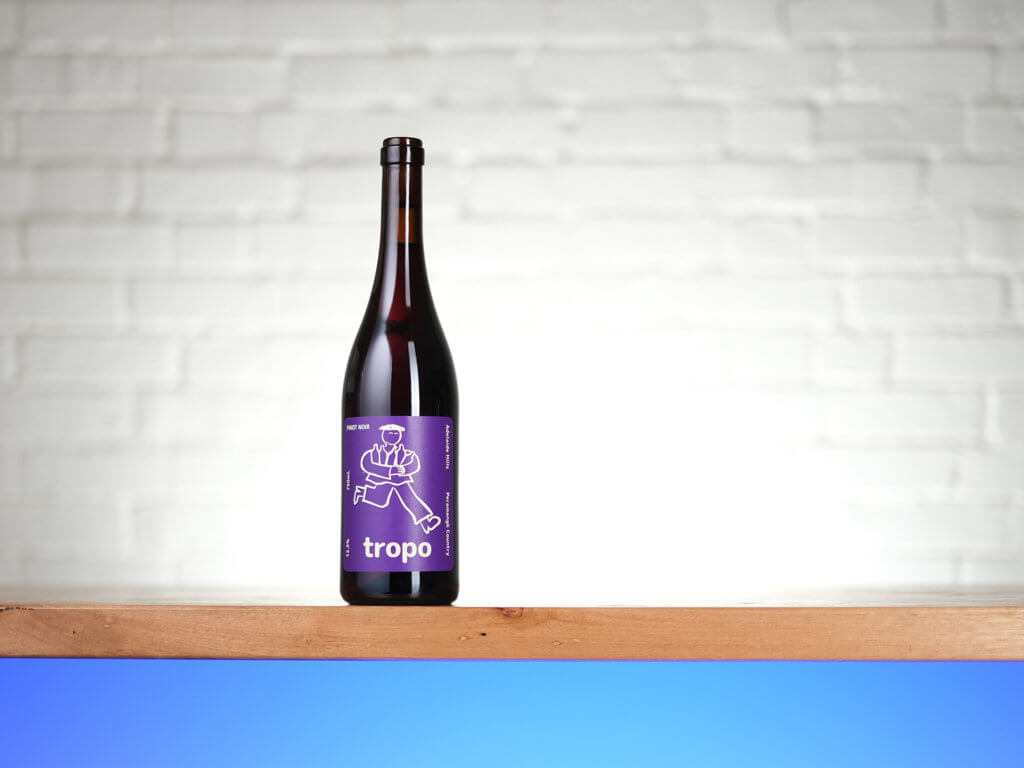
Purser had this just one back from his wine of the tasting. “The bright vermillion colour gives an indication of the vitality of this wine,” he wrote. “A spice laden nose of cardamom, cumin and pepper play with a spectrum of red and blue fruits. It tastes like red apple pie with soft, slippery tannins and a good persistence. The flavour broadens (in a good way) as the wine warms up in the glass.”
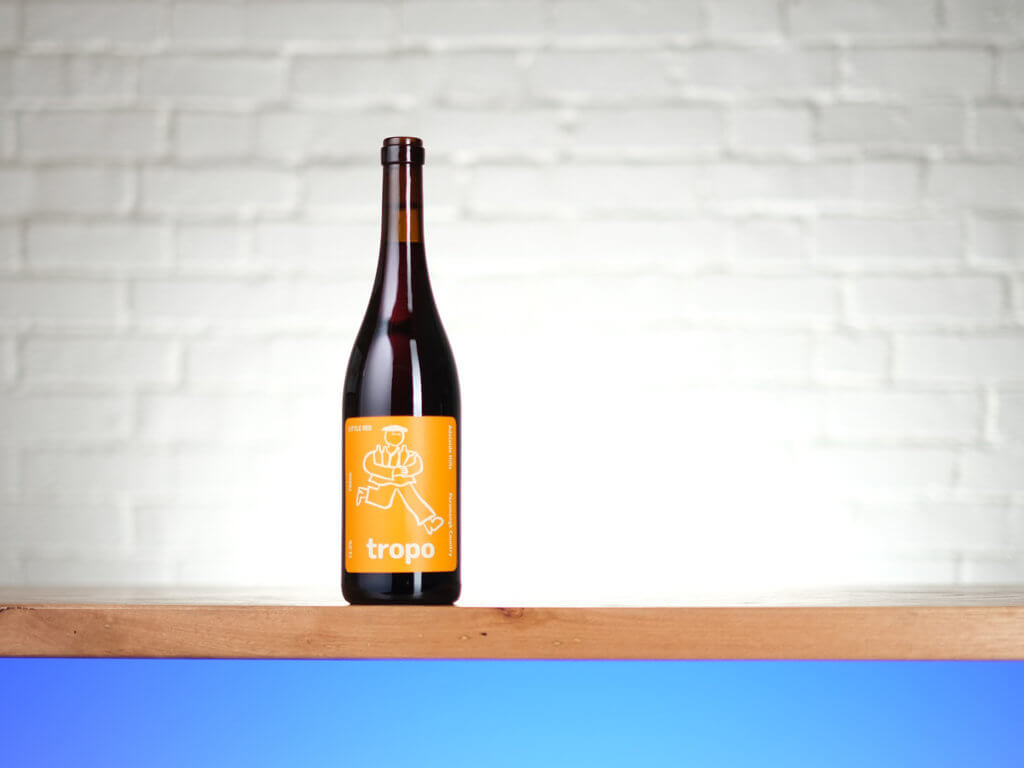
Kubis had this in second place for his top wines of the tasting. “This jumps from the glass, ultra-extraverted in its aromatics, touching most points on the red fruited flavour wheel (see strawberries, cranberries, raspberries and cherries),” he wrote. “The fruit flavour is vivid, and in the mouth, it is plush and juicy. A perfect picnic partner from spring to summer.”

Sokolin had this in second place for the tasting. “Entrant 54 didn’t necessarily deliver what we haven’t seen before in this line-up – it just did it better,” he wrote. “Bright, vibrant red berries on the nose, which checked out on the palate. Often what you are promised aromatically doesn’t quite translate in the mouth, but that wasn’t the case here. I really felt the red berry fruit profile on the palate and a touch of herbaceousness, likely from stems, kept things interesting and refreshing. There were no elbows to it. Tannins were in line, acidity matched the weight of the wine and it didn’t feel forced at all. And I suspect the quality of the fruit here was tip top.”

Vercoe had this in the top half of his six selections from the tasting. “A pale strawberry-water colour, the nose brings aromas of sour blood plum and farmhouse red ale, with floral aromas of wild poppies, lavender and an ash-like mineral character in the background. The palate is electric, almost bursting, with redcurrant, pomegranate and rosehip. The fruit and floral vibrancy is countered with delicate and slightly gravely tannins and a pleasant crunchy astringency that adds a wild thyme flower and sorrel sour-savouriness to the finish. The wine comes at you from all angles; it’s bright, tart, crunchy, savoury, pretty and delicate all at once. But most importantly, it’s balanced, refreshing and delicious.”

“Quietly confident, this wine had an enjoyably slow and steady release of all its aroma and flavour components,” wrote Reid, placing this in her top three. “By no means a fruit bomb – this wine is cool (literally), calm, and collected; delightfully charming notes of pomegranate, fig, and damson plum bring you to its cohesive climax.”

Brodtmann had this in the top half of her top-six list. “A stemsy offering with blueberry, sour cherry and woody herbs,” she wrote. “Despite its more brambly flavour profile, the wine is light bodied, which makes it so gluggable. An interesting mix of confected and fresh red fruit and furry tannins that are well matched by the berry fruit. Your go-to picnic wine, but keep it chilled, as this is a style that, like revenge, is best served cold!”

“I’m enjoying a really crispy toasted gruyere cheese sandwich in my mind while sipping this one,” wrote Riemer as she placed this towards the middle of her top six. “Plush black fruits once again for me. A great wine for the oily fish fans, too, imagine that lovely plate of pan-fried sardines along with an olive tapenade and some slow-roasted shallots.”
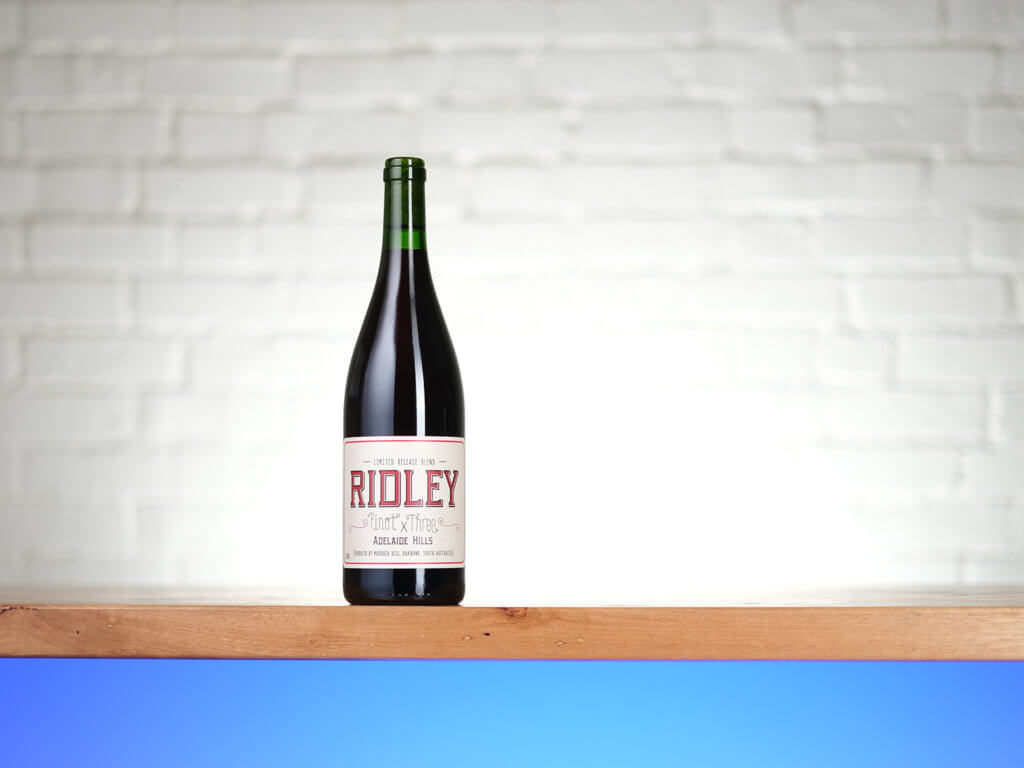
“Garnet in colour, it shows generous amounts of red and blue fruits aromatically,” wrote Kubis, placing this towards the middle of his top-six selections. “Deep and concentrated flavour in the mouth, if park wine is the order of the day, this may be slightly over-qualified. Deep and complex interplay between primary fruit and secondary character, it has all the supple fruit weight that the style intends but with savoury edges that keep things very interesting.”
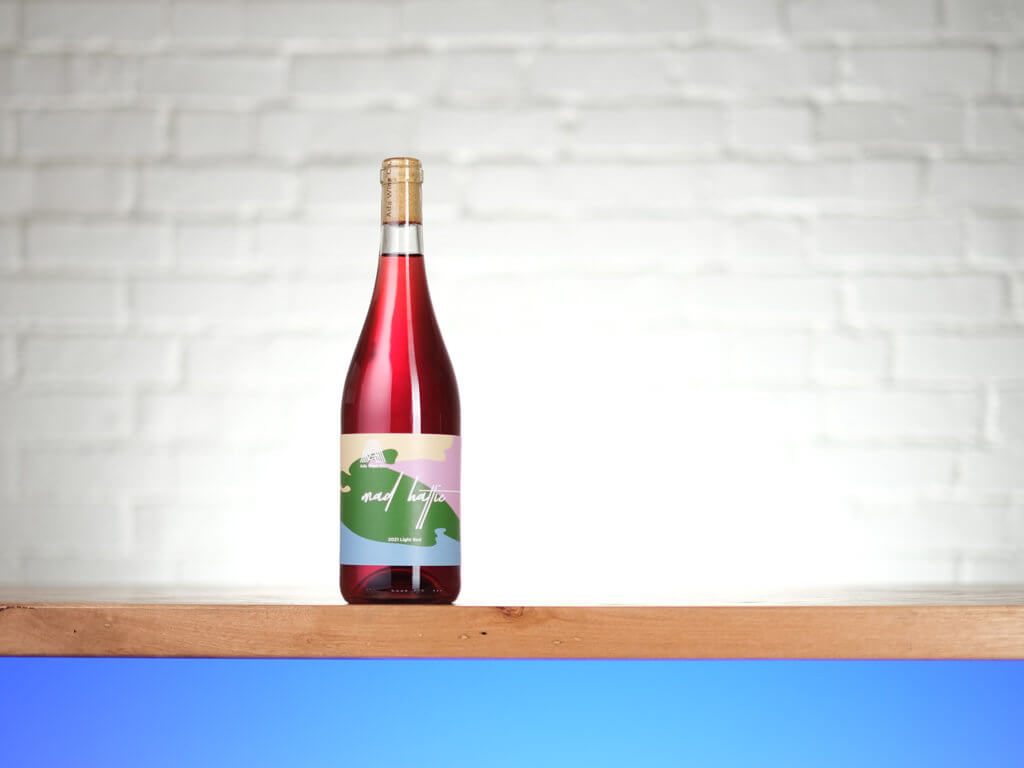
Vercoe had this towards the middle of his top-six selections “The vivacity of the ruby brightness in this wine was mesmerising – what a colour!” he wrote. “The nose was like a walk through the orchard. There was sweet Pink Lady and custard apple, crunchy Kanzi, slightly astringent red delicious and delicate cherry blossom. The wine glided through the palate with delicate ease and was offset by a chalky, just-there tannin that did just enough to frame the wine and add textural complexity. The light chill of the wine gave a finish marked by a provocative scent of quince, cherry and a reviving pomegranate-juice sharpness.”

Brodtmann had this towards the middle of her top-six selections. “The colour suggests a light, dry red and the palate delivers on this,” she wrote. “Odd, but beguiling, aromas of freshly washed linen and rose petals with hints of green olives. Squished strawberries, stems and all, with bursts of raspberry and tinned cherries. The tannins are raspy but there is so much fruit bursting around them that it just makes you want another sip. Beautifully perfumed and precise.”

“This one smelled like cherry-compote juice, and it may very well be cherry-compote juice,” wrote Sokolin, giving this a top-six berth. “That’s totally fine with me. A cocktail of Luxardo cherry syrup and something else… It feels less vinous, which was refreshing and wonderful. Early summer incarnate. It gives just enough and leaves you with tart, invigorating acidity. Perhaps a sangiovese… perhaps cherries. You could start that conversation. It was good cold, maybe less fun warm, but it certainly studied the brief.”

Scarcebrook included this in his list of top wines for the tasting. “Super pretty and bright, a bit candied on the nose but vibrant and fresh, with cranberries and raspberries,” he wrote. “Lovely generosity but super crunchy and dry, bold fruits without being heavy or overwhelming, good depth but doesn’t linger too long, encouraging more sips.”

“An intriguing wine more in your red wine that can be served along the chilled to warm spectrum,” wrote Brodtmann, including this in her top six. “Sour cherry, kirsch, raspberry and stems suggest some carbonic maceration to lift the fruit profile. This wine will be your friend with food thanks to the beautifully structured palate and dusty tannins. My mind kept flashing to low and slow, dry-rubbed, barbecue-sauce-slathered pork ribs. The wine will carry you from the start of the cooking process to the end.”

“This one gave me old raisins, baking spices, even caramelised orange peel and that lovely memory of a Christmas cake baking in the oven,” wrote Riemer, giving this a top-six spot. “This wine had a deep fleshy spice to it that I would enjoy with the perfect steak sandwich filled with caramelised onion, Comté cheese – you know the kind of steak sandwich that wants that cold spicy red wine to pile on to all that oozy, saucy fat!”

Kubis had this amongst his top-six wines of the tasting. “Freshly fruited aromatics but still somewhat shy, showing grenache-ish personality, lots of sweet raspberry and dried cranberry character,” he wrote. “Interesting to see it come up in temperature, gaining complexity but losing none of its vibrant drinking moreish-ness, perhaps the alcohol starting to peep through slightly. Medium bodied with curvaceous mouthfeel.”

“There was a bold sweet fruit flavour to this one, along with a bit of a smoky finish,” wrote Riemer, giving this a top-six finish. “Another one that made me think of that perfect roast beef and Yorkshire pudding at the pub, or a delicious piping hot steak and kidney pie. I love the idea that this chilled red was screaming out for big gamey and meaty flavours.”
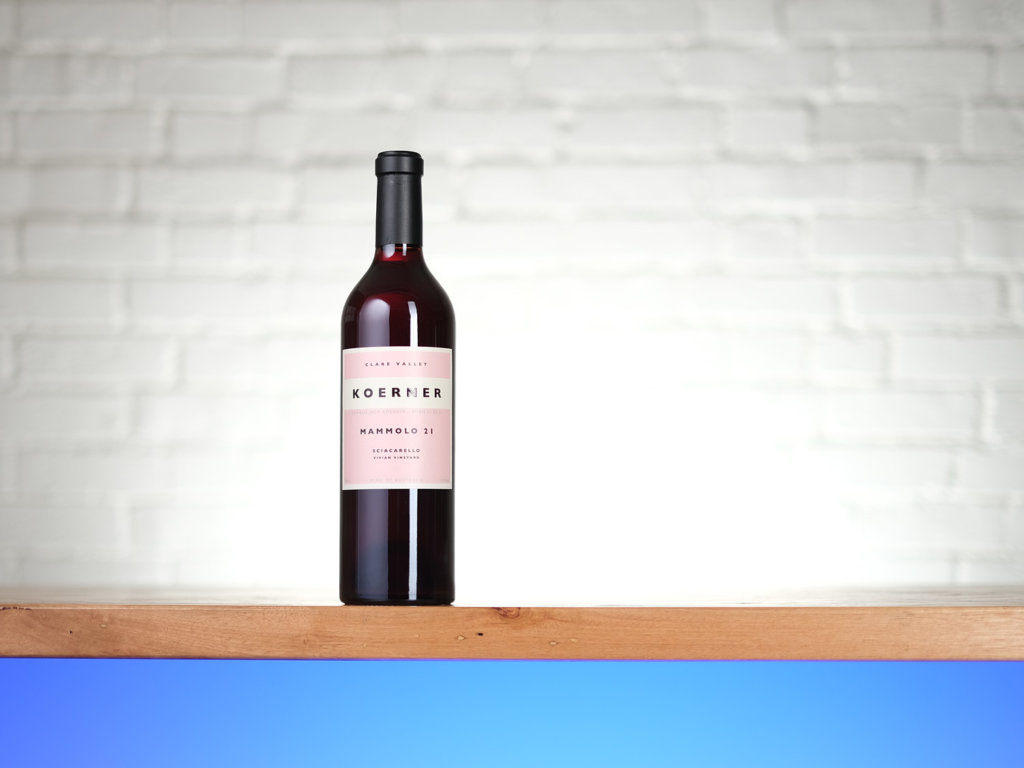
Reid had this rounding out her top-six selections of the tasting. “Do yourself a favour and chill this wine!” she declared. “The wine lends itself so brilliantly to chilling, enhancing its vibrancy and rather seductive nature. Structurally, it is balanced and refined, and the acid is particularly refreshing and uplifting while a fruity orchestra of cranberry, redcurrant and raspberry play right to the finish.”

“Another vibrantly bright ruby coloured wine with an aromatic profile of red sour field herbs, redcurrants and wild strawberry flowers,” wrote Vercoe, including this amongst his top-six wine of the tasting. “The chill makes this wine dance! A palate packed with purple leaf plum, red vein sorrel and the prettiness of violets. There is a seamlessness to the wine at this temperature – I can’t even fathom to drink this wine any warmer. The delicate brushy tannins give the wine a herbal edge that sharpens the wine, and a tangerine acidity just leaves you salivating.”
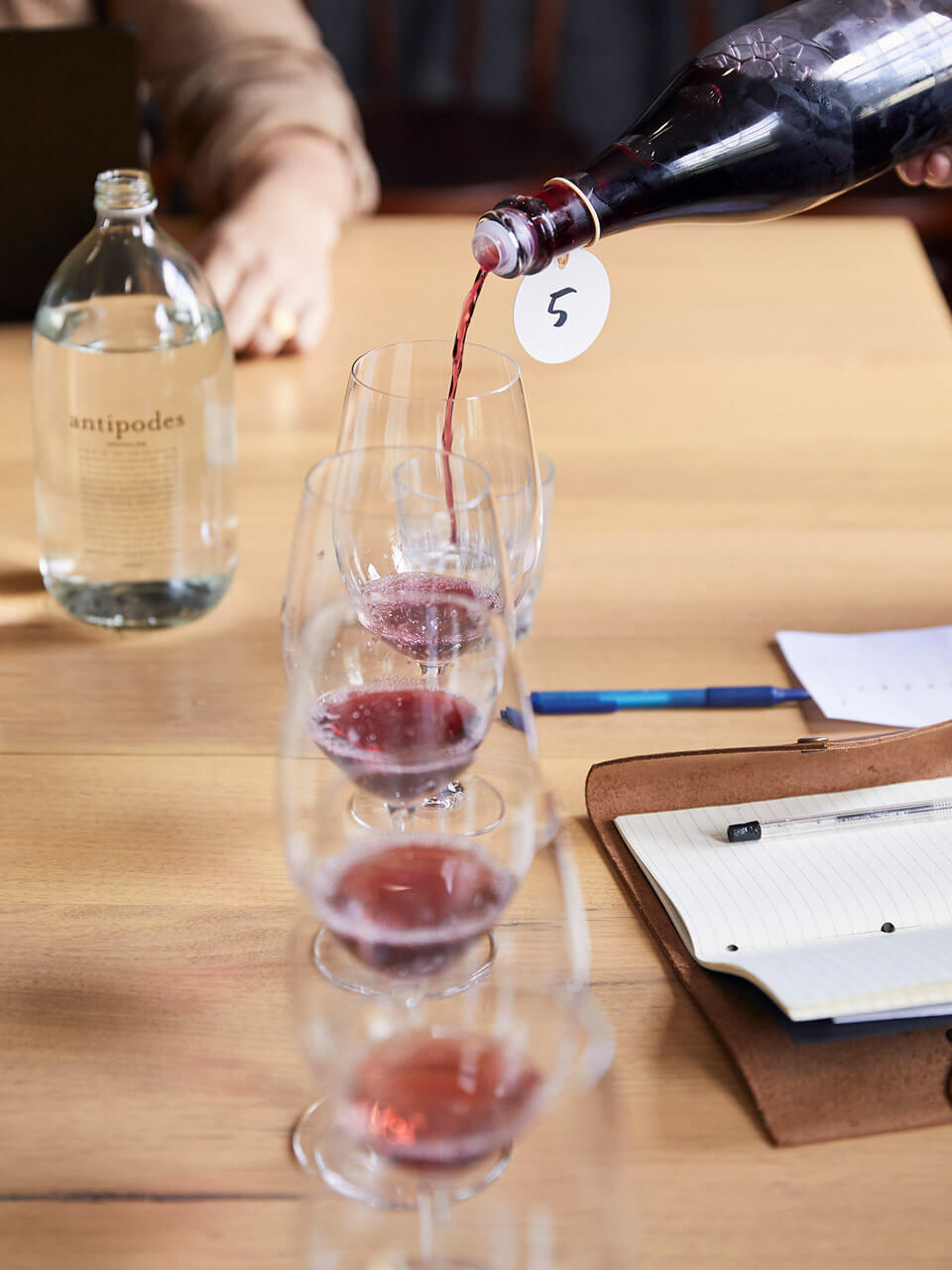
Not so long ago, rosé was shunned as a serious wine, and many examples made in this country supported that snobbery. Longer skin contact gave them a deeper hue, and any tannin was usually removed by the winemaker. What they did include, though, was plenty of sugar. Often luridly pink, sweet and confected, they had their fans, but how could you take them seriously?
Fast forward, and most rosés have barely a tint to them and are aridly dry, very much in the Provence mould. And while no-one (well, not many), want a return to those fuller rosé styles, there was certainly a yawning chasm between rosé and red wine. Thankfully, that void is being filled with chilled reds that offer both refreshment and red wine flavours in happy harmony. It’s certainly no coincidence that they also work with a broad range of cuisines and a lifestyle that takes us into the open at the merest glimmer of sunshine. The wines are built for modern times, but red wine has traditionally always been served colder than most of us are used to.
Serving red wine cold is not such a radical idea. In fact, historically it would have been the European norm. Even in warmer regions, cool underground cellars were common. And in winter, the temperature of wine would have plummeted with the mercury – though some of those cool cellars would have been warmer than the above-ground ambient temperature.
That storage certainly proved to be beneficial for wine, with it aging more successfully, rather than cooking and spoiling in the hotter months. When a bottle of wine gets hot, negative chemical reactions quickly occur, and exponentially so the hotter it gets. Fruit flavours go from fresh to dull, and the wine physically expands and compromises the cork’s sealing properties. Keeping wine cold made sense, and it also proved to become the preferred temperature for many wines.
“Aussies realised that their outdoor lifestyles during summer – think beaches, picnics, parks, barbecues, Christmas in the backyard – wasn't conducive to a glass of 15% Barossa shiraz consumed on a 35-degree day in the sun!”
Some traditional cellars are cooler than others, but somewhere around 12°C is a great temperature for storage and a handy way to serve most wine, with bigger reds coming up in a warmer room temperature relatively quickly, and it’s pretty quick to drop the temperature of whites and sparkling wines – well, it is these days with readily available ice and refrigeration.
The reality is that we’ve become accustomed to drinking red wine too warm (and whites too cold, but that’s another matter), with average room temperatures too toasty for getting the most out of the wines, let alone a sweltering day in the backyard with the barbecue firing.
What happens when a wine is too warm? For reds, when the temperature rises, the alcohol will become more apparent and any delicacy of fragrance will be lost. A similar thing happens on the palate, with the flavour detail somewhat smudged and the alcohol displaying a ‘hot’ feeling on the back palate, a breathiness. That heat is naturally more apparent with higher alcohol wines, while low alcohol reds will just become less appetising.
And while not everyone is looking for the same type of refreshment in red wines that they do whites, a red becomes stodgy and unpleasant when warm, lacking freshness and essentially being distorted out of balance. Put simply, it’s not what the winemaker intended.
A little rest in the fridge or freezer is a good way to bring a bottle of red back in line, but some take the chill better than others. While a soar in temperature has a volatile reaction in reds, a too savage dip in temperature causes its own problems. And that’s got a bit to do with the way red wines are built.
It’s worth a bit of winemaking 101 to understand this. Almost all grapes, red or white, will make a white wine if the juice is pressed off before it has any contact with the skins (there are some red grapes that have red flesh, but they’re uncommon, so let’s push that to the side). It’s the skins that hold the colour (anthocyanins, if you want to get technical), as well as plenty of flavour, and they are also responsible (along with the seeds, and if fermenting with whole bunches, the stems) for the grip in red wines and skin-contact white or orange wines. That grip is due to tannins, and they’re an important structural element in red wines, balancing out the fruit and giving the wine shape, cinching in the fruit.
A robust red wine with plenty of those tannins, a dry red if you will, is about the last wine you want to get chilly with. The drop in temperature will pull the fruit down and it will snap those tannins into the foreground, turning the wine inside out. A gentle drop in temperature will disguise the alcohol of a bruising red wine, but that’s not what we’re talking about here, with a proper stint in the fridge the real test.
That’s not to say that reds that are built to chill should be drunk at the standard food-safe temperature of 4 degrees, but most of us don’t have temperature zones in our fridges to accommodate the ideal target zones of various varieties and styles. It’s a one-size-fits-all deal, and that bottle, red or white, might just as easily sit in an Esky for a picnic on a sweltering day. Excepting those of dubious quality, no wine is enhanced by near-freezing temperatures. A splash in the glass will tell you if it needs to sit for a little (the wine in the glass will warm up quicker than the bottle) to raise a few degrees, or if it’s good to go. The key things to look for is if the wine looks a bit muted in fragrance and the palate feels a bit dry. If so, bring it up for 10 minutes or so and check again.
While it’s not easy to generalise about what wines are best chilled, the basic rule of thumb is that they should have some level of fruit brightness and not too much tannin. Very dry and savoury styles will become hard and flavourless cold, while bright-fruited, crunchy reds with good acid will relish the chilly temperatures. Those wines are also brilliant foils for hot and spicy food, with the plusher textures, sweeter fruit and lower tannin the right recipe to combat the heat, not to mention the pure refreshment factor of being chilled.
In Carlton’s leafy Rathdowne street, Isy Szyman works as a wine buyer at local independent fine wine store, Rathdowne Cellars. It’s a role she took up early in the pandemic when work at the City Wine Shop abruptly stopped. And while Rathdowne Cellars has long been a progressive wine merchant, with a deep imported selections along with lots of small local makers, it’s probably not the first place you’d think of to shop for zeitgeisty skinsy wines, ‘park wines’ or chilled reds, but alongside classic riesling, Chablis, zippy Spanish albariño and pale rosé, you won’t go short of options if a chilled red’s on your shopping list.
“It’s definitely a category I spend more time in my week thinking about than I ever thought I would have,” Szyman says. “I’ve been at the cellars for two years, and we’ve gone from no reds in the fridge to a shelf full of them, with more on rotation. It’s growing – though not booming in the cold weather – and there’s certainly enough turnover to keep a section dedicated to them in the shop.”
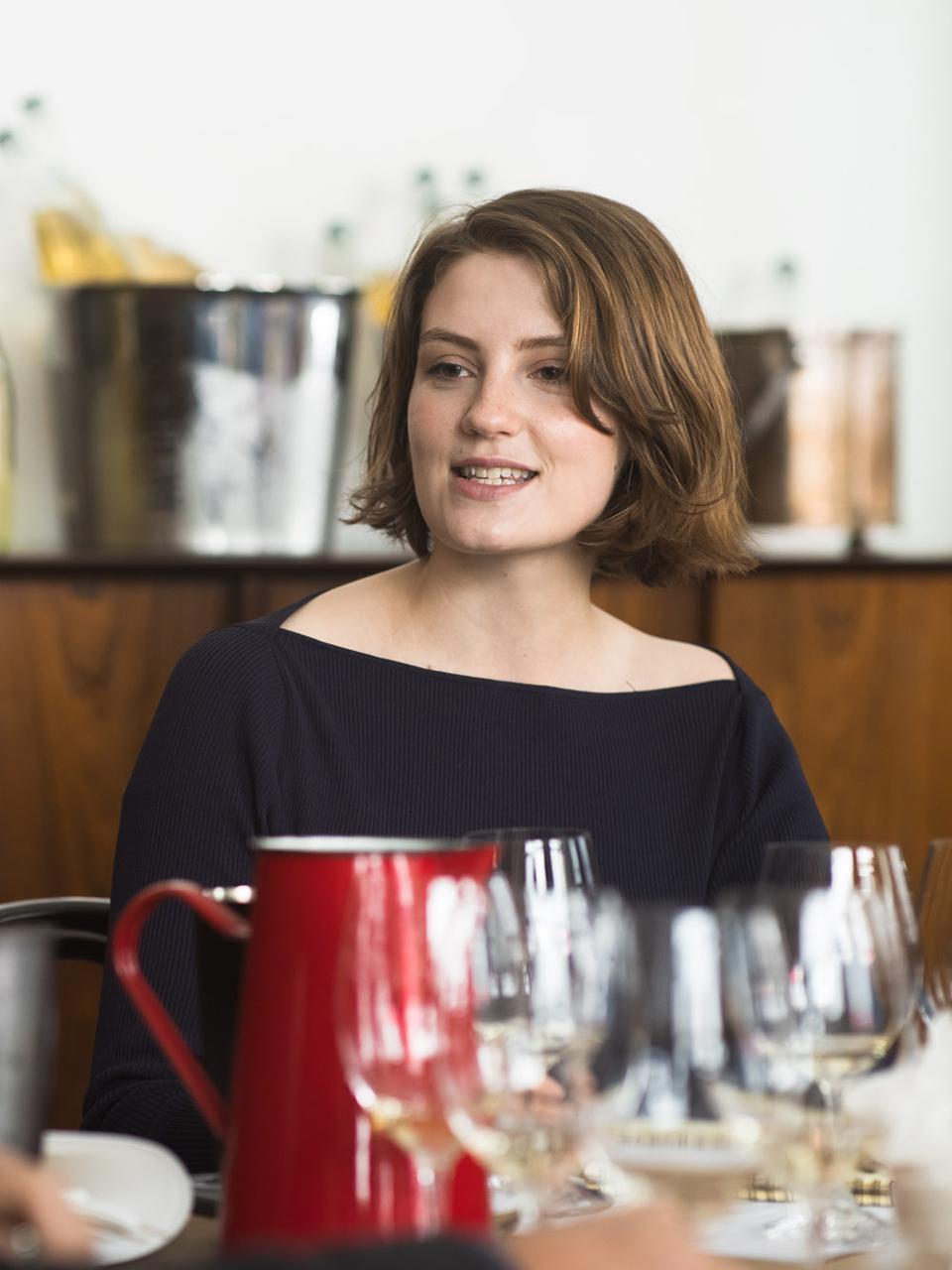
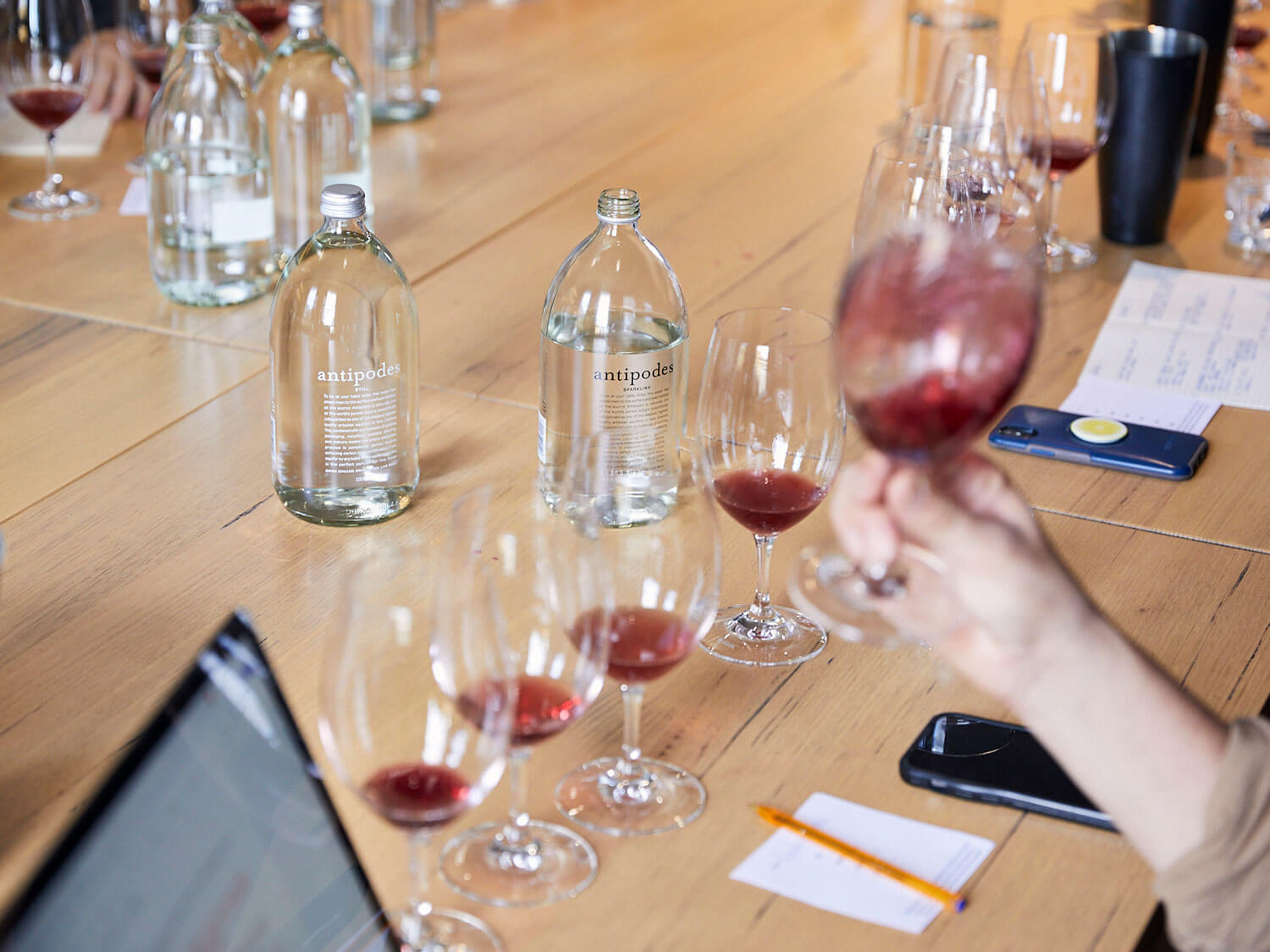
For Szyman, the wines that make the fridge aren’t those that drink better with a subtle temperature drop, but rather one’s made with some intent. “The better ones, I find, are those purpose built. I don’t know that I’ve ever tried a great chilled red that was a real ‘wine of place’ type,” she says, noting that varieties like nero d’avola, grenache and gamay lend themselves to the style, but many others work, with one of their most popular chillable reds made from the most unlikely of grapes, cabernet sauvignon. That wine sells better out of the fridge than on the shelf.
“The appeal of chilled reds isn’t far off what people liked about really structured orange wines when that was all the cool kids would drink,” Szyman says. “They’re often versatile wines with enough structure and fruit weight to chill down and still match the pared-back style of dining I see a lot of in Melbourne right now – simple ingredients with intense flavours.”
And while the category has been booming at Rathdowne Cellars, the more conservative local palates aren’t necessarily swinging open that particular fridge door. “As far as the old guard of Carlton are concerned, chilled reds don’t exist,” Szyman says. “I think they would lump them in the same category as darker rosés. That is, they should be illegal. We just have to make sure no one tells them what sparkling shiraz is!”
Matt Thomas is the operations manager for new five-level venue HER in Melbourne’s Lonsdale Street. While French-leaning modern bistro fare is the order of the day on the ground level at HER Bar, the temperature rises up the building, with the Rooftop and BKK celebrating the street food of Bangkok.
And that food, while with some modern spins, is faithful to the hot, spicy and sour qualities that you’d find on the streets of the Thai capital. Not an easy partner with wine, in other words. “We’ve found that chilled reds work incredibly well with the menu, along with off-dry and textural whites,” says Thomas. “It was a bit of a surprise, but some of them are about the only thing that stand up to some of the properly hot dishes.”
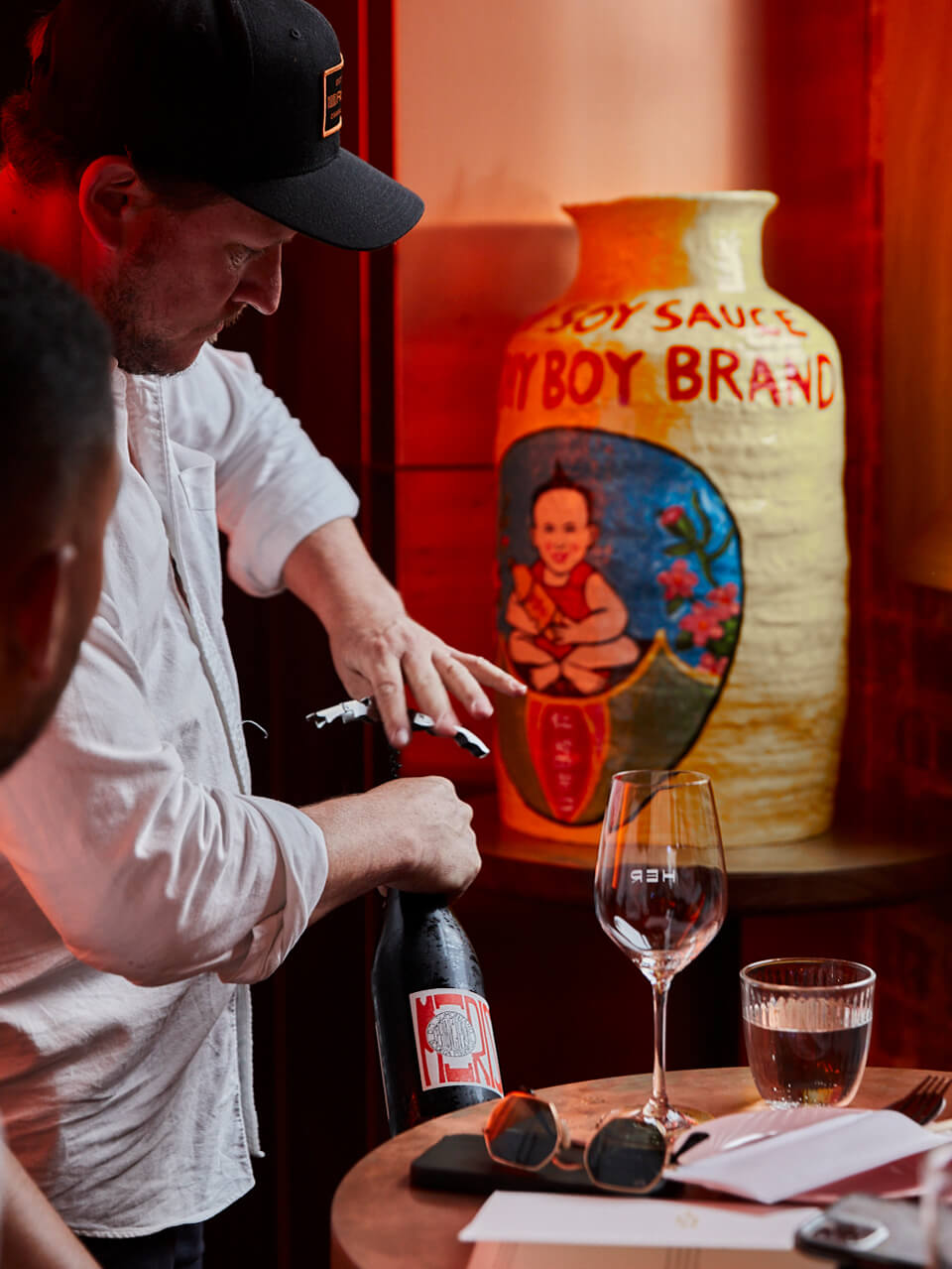
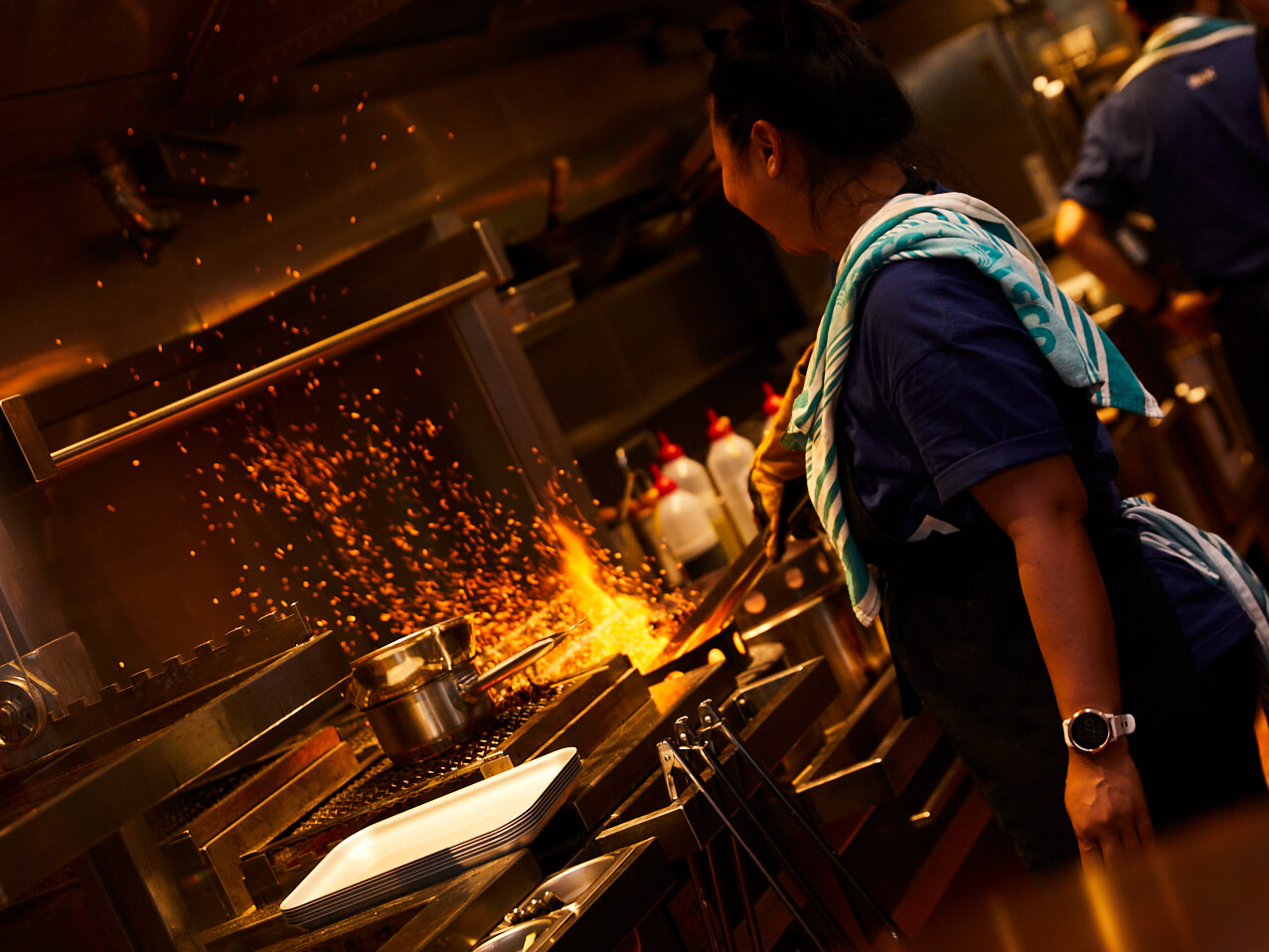
While pure refreshment is a significant factor, Thomas believes than some of the wines come into their own with the heat. “Cold wine is good with hot food, but it’s the fruit sweetness that really balances the heat, and the chilli and intense spicing enhances some of the fruit flavours on the palate, rather than dulling them,” he says.
Thomas also notes that some wines that can look a bit light and confected when warm can synch into harmony when chilled, with the key attributes being low-ish tannin combined with good acidity. “There needs to be some freshness in the wines to chill them down, and too much tannin is a non-starter with spicy food,” he says.
Abby Moret is the owner operator of Atlas Vinifera in Richmond’s Church Street, which is in the much-loved enoteca mould of wine bar/store that Melbourne does so well. Moret’s collection of wines is broad ranging, from the familiar to the esoteric, with the list of chilled or chillable reds growing over the last couple of years.
“Interest in chilled red has been growing exponentially for us over the last couple of years,” Moret says. “Especially during COVID, when a lot of people moved more of their life outdoors, white wine just wasn’t going to cut it for a lot of people. So, as more people found out about chilled red as a category, the sales shot up. Picnics in the park could now include some bubbles, some white, some rosé and some light chillable red.”
That’s an extension of the boom in rosé, says Moret. “Aussies realised that their outdoor lifestyles during summer – think beaches, picnics, parks, barbecues, Christmas in the backyard – wasn’t conducive to a glass of 15% Barossa shiraz consumed on a 35-degree day in the sun!”
For Moret, the idea of cooling reds extends from those getting a proper chill to ones where the mercury is dropped a little less. “We often get requests for reds that are chillable – though not necessarily consumed at the temperature of white wine. Even a few degrees colder works a treat. I think we have finally worked out that room temperature in France is not the same as room temperature in Australia.”
Changing winemaking philosophies have also had a big influence. “Varieties like grenache, gamay, pinot noir and even syrah are being made in increasingly ‘user friendly’ styles – less tannin, more juicy fruit, lighter alcohol,” says Moret, noting that a desire to drink on a red and black fruit spectrum shouldn’t be limited to ambient temperatures.
“A younger generation is certainly leading the charge, but as chilled red became a permanent option on our menu over summer, more customers were curious to try it, more traditional drinkers used to a glass of shiraz or cabernet were opting to try a chilled style. It became such a large part of our sales over summer that we had a regular rotating option that we changed weekly, as well as a dedicated shelf in our fridge.”
It’s pretty clear that chillable reds are here to stay. They fill in a space that white wine and rosé don’t occupy, knitting seamlessly into a lifestyle that makes the most of the being out and about when the sun shines. And even when the weather drives us indoors, chilled reds have just as important a role at table, lending themselves to many cuisines, matching perfectly with hot and spicy food and being general good all-rounders for our love for shared-table dining.
“What I look for in a chilled red is sheer smash-ability, which sounds simple but that’s part of the fun of the category,” says Moret. “Cheerful, fun wines that don’t break the bank or your head during daytime hangs. There’s a plethora of different styles and flavour profiles out there, and it’s an exciting category to explore as both a buyer and a consumer.”
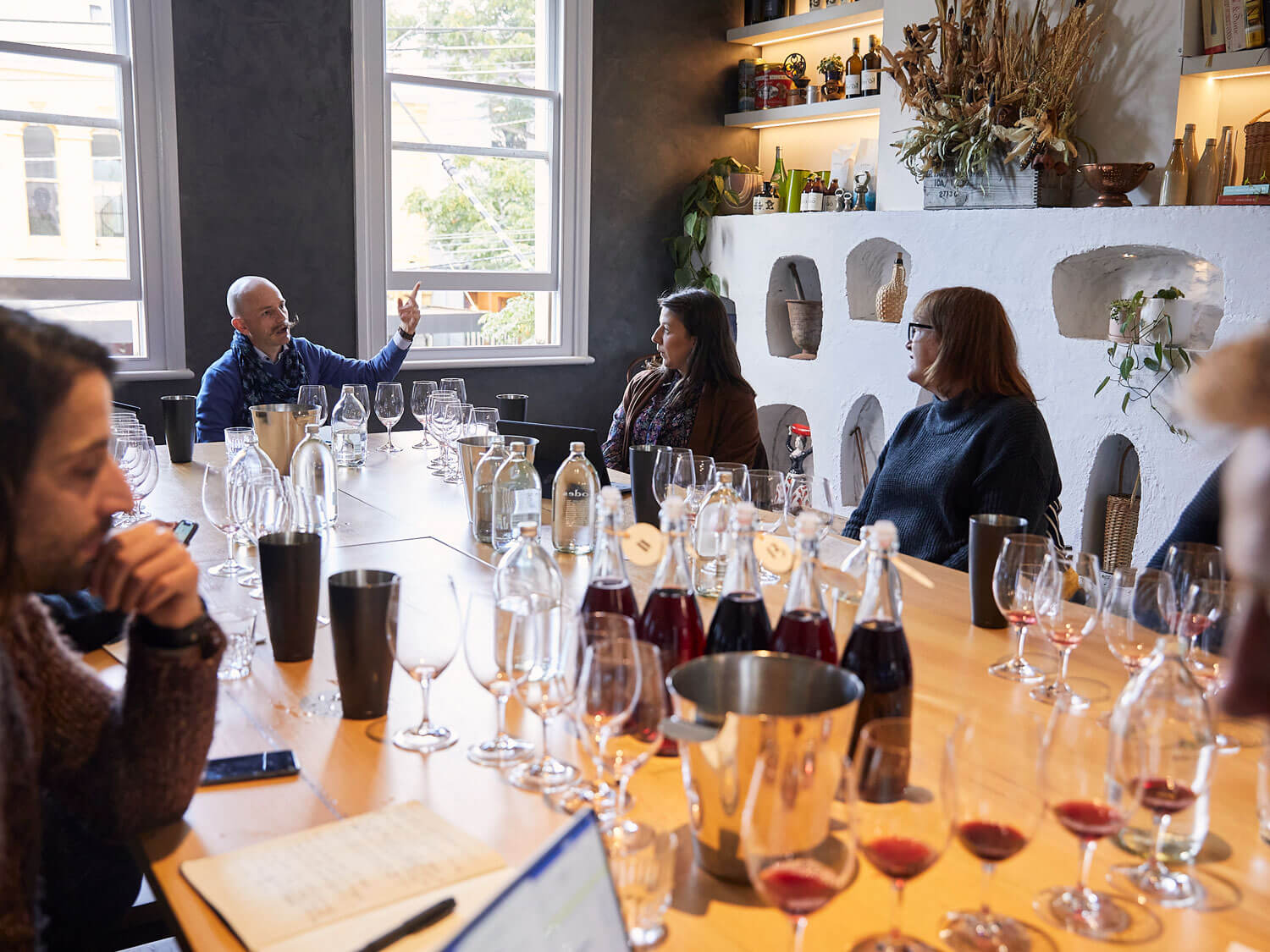
Our panel: Meg Brodtmann MW, head of Education and Global Outreach at Rob Dolan Wines; James Scarcebrook, Winemaker Vino Intrepido; Nicola Reid DipWSET, Manager The Spanish Acquisition; James Vercoe DipWSET, Sourcing Manager Wine Coles Liquor Group; Nicky Riemer, Head Chef Bellota; Lyndon Kubis owner of several wine bars and DITC online retailer; Justin Purser, Chief Winemaker Stonier; Mitch Sokolin, Winemaker Eleven Sons and Owner Manager Gray and Gray, Northcote. All wines were tasted blind.
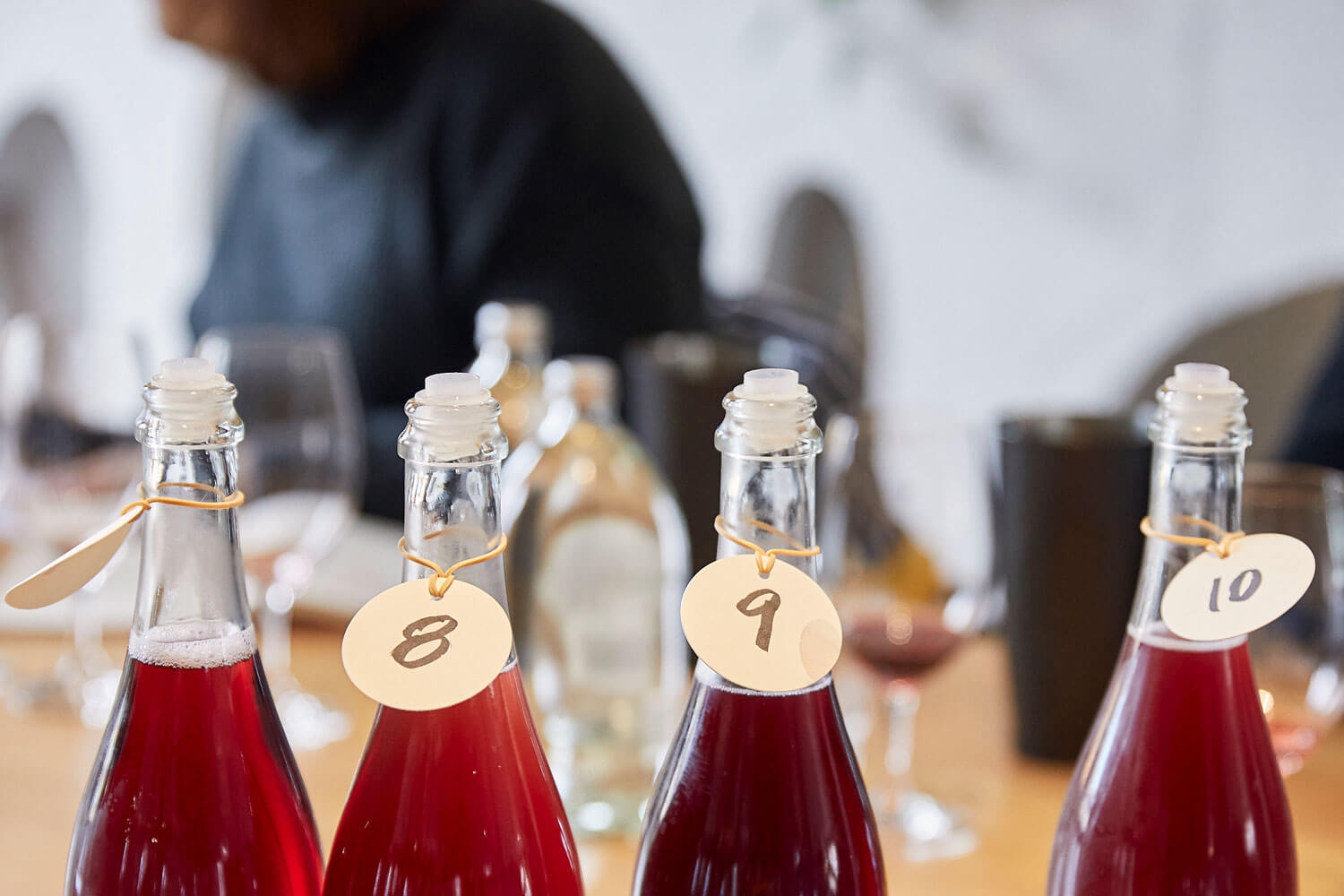
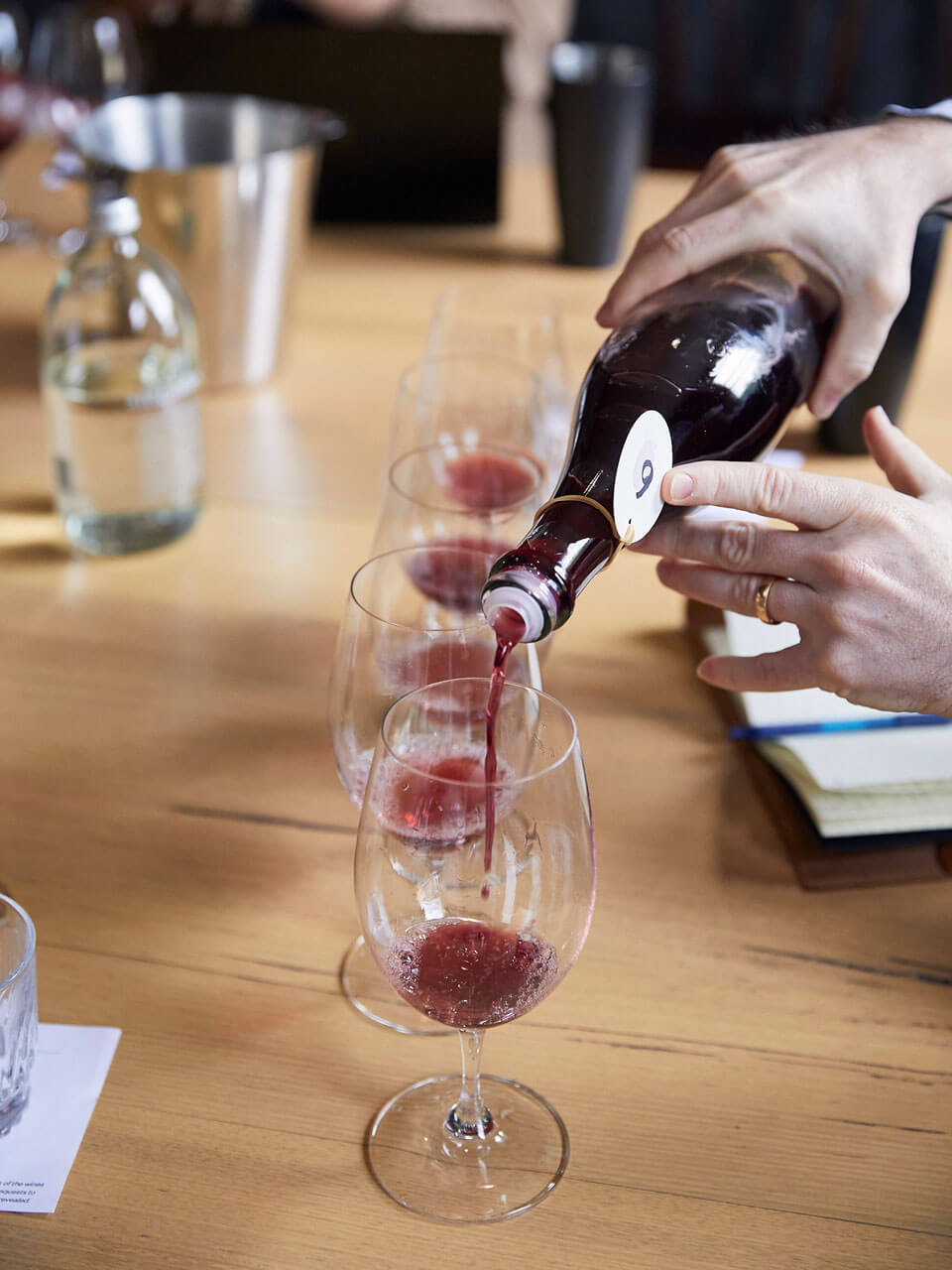
“If there’s much or any new oak in a red, it screams out of the glass when you chilli it down, and it becomes like licking a fence post that has had red wine poured on it, and it overtakes the fruit characters,” said Vercoe. “I’m always more interested in fruit-driven styles…”
“There were many wines that were very vibrant and lifted and jumped out of the glass, and often they worked really well, the structure leant well to being chilled,” agreed Reid. “But I found the interesting wines were those that changed gears in the glass. Perhaps they were slightly muted in the beginning, but they revealed themselves, and they weren’t necessarily the most jubey and vibrantly fruity wines; they had more subtleties.”
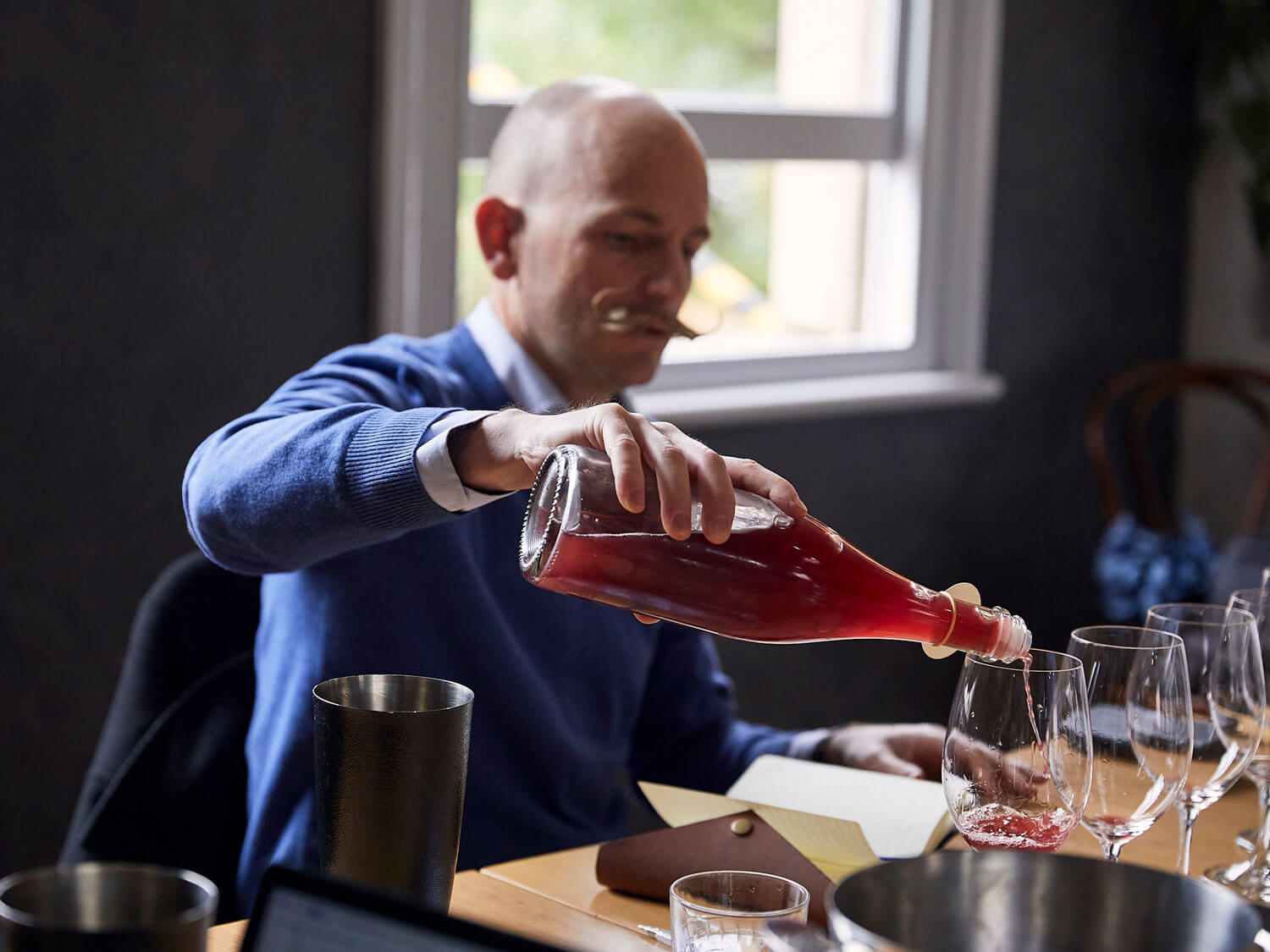
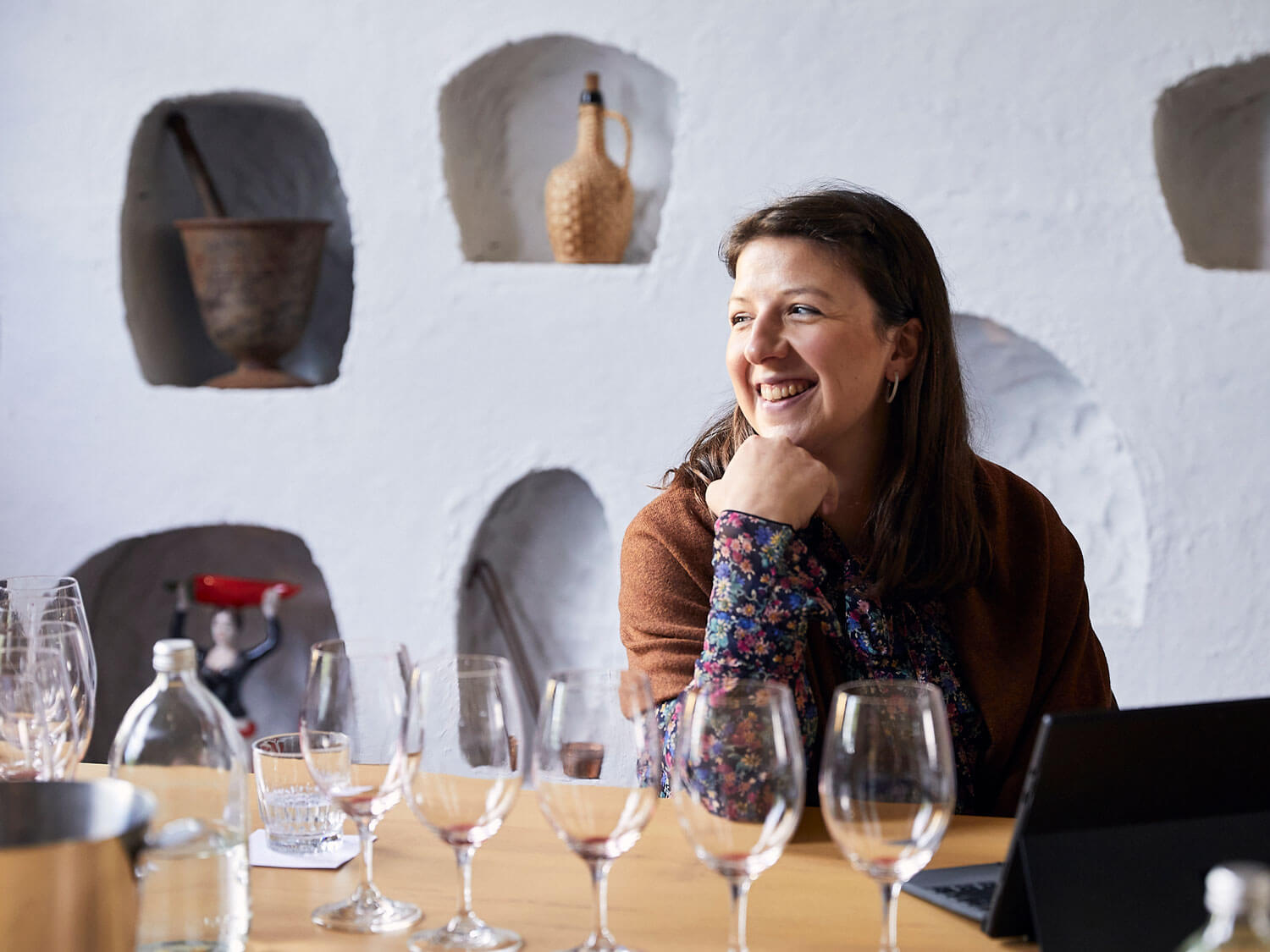
“I found they fell into three categories, which made it really hard to judge,” said Brodtmann “There were those that were effectively rosés with a little phenolic grip, and they had lots of confected fruit. Then there were wines that had more depth of character, and they felt pinot-esque with a lot of cab-mac and some sourness. And then light dry red effectively, with more depth of flavour but they were still delicious chilled, but they had more tannin grip.”
“When I was writing the notes, I was more thinking of the tannins in a white wine phenolic sense, rather than pure red wine tannins, even though it’s the same dry extract,” added Vercoe “For me, it’s the fruit, phenolic and acid balance, and making sure it’s refreshing, most of all. That it really wants to make you go back for more, makes you want to eat some food, but making sure there’s enough tension, too.”
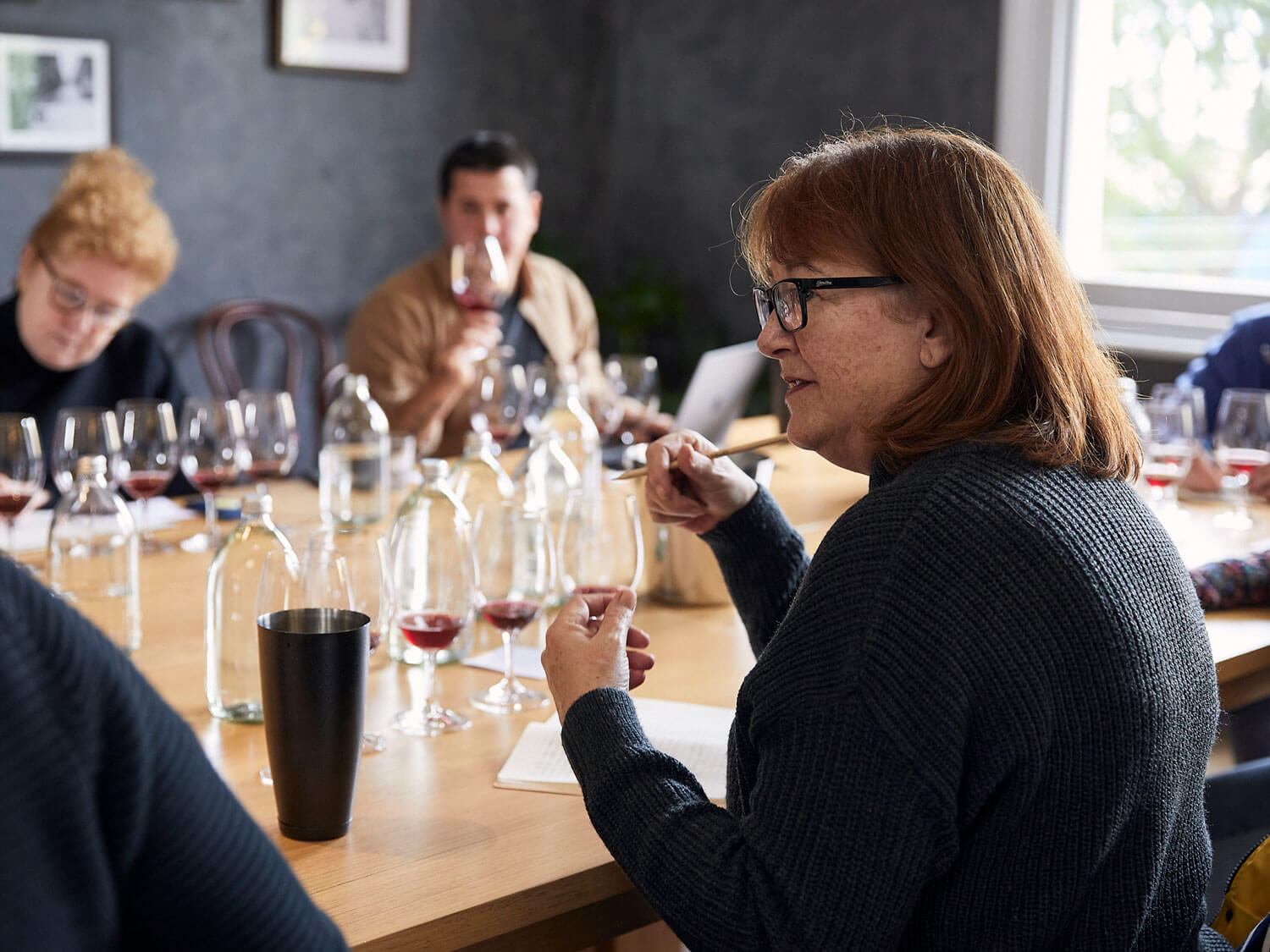
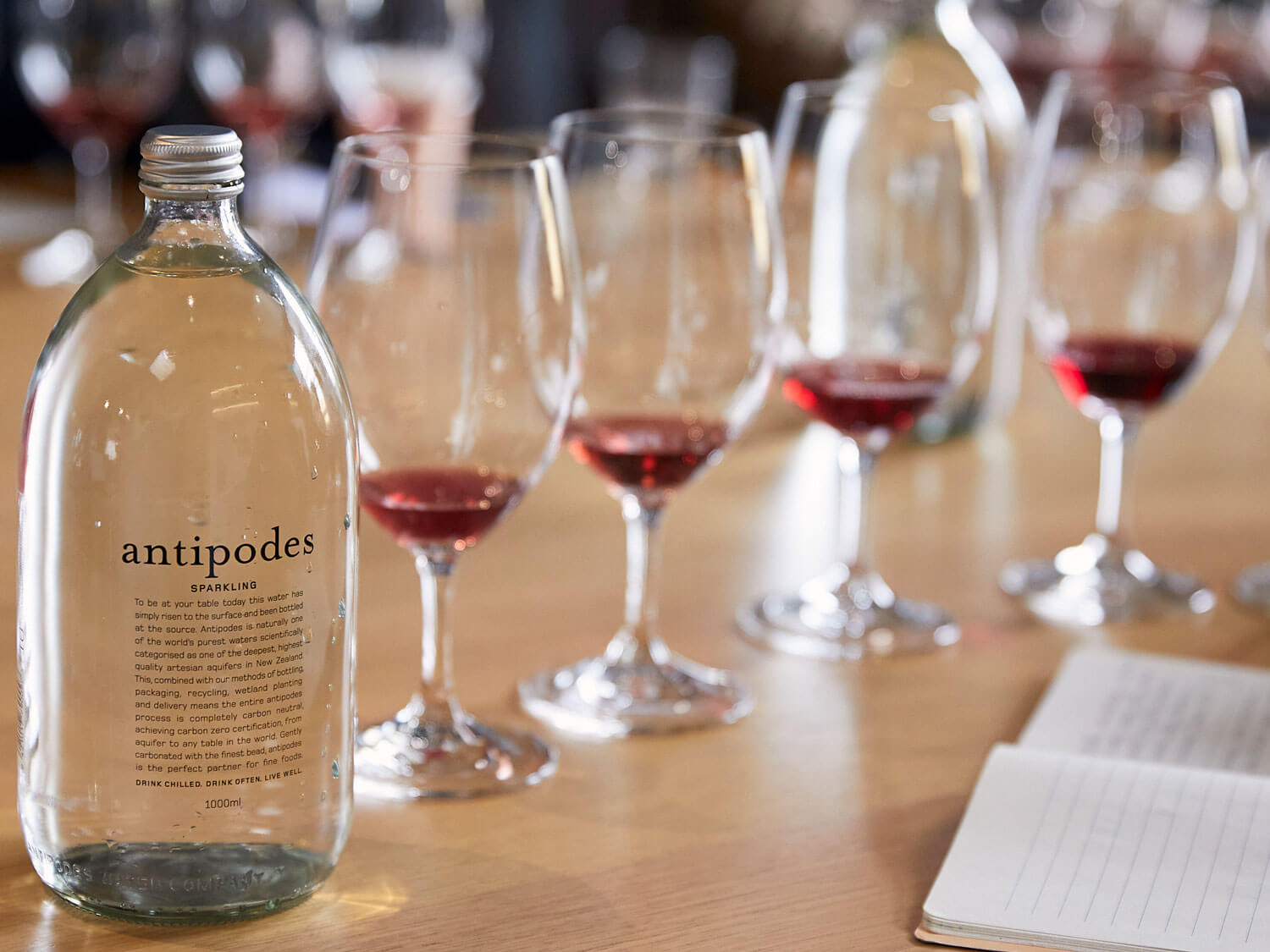
“There were those that were effectively rosés with a little phenolic grip, and they had lots of confected fruit. Then there were wines that had more depth of character, and they felt pinot-esque with a lot of cab-mac and some sourness. And then light dry red effectively, with more depth of flavour but they were still delicious chilled, but they had more tannin grip.”
“When I was marking them, I awarded the diversity, because I’m new to this category. I thought it was really exciting, but hard to choose the final six,” said Brodtmann.
“Some of the wines I chose for my top six were subtly savoury, some had nice rosehip, briar… really subtle nuances, things like tomato leaf… that added beautiful complexity to the wines,” added Reid. “With a preconceived idea of what a juicy chilled red might be, it’s probably not what you would expect, so I was really pleasantly surprised. There were lots of interesting wines in the tasting.”
“The things that didn’t work for me were the more extracted wines,” said Vercoe. “Some got that farmhouse Belgian red ale style just right, and some were like drinking sour beer, which went a bit far for my palate. The balance was key once they were chilled. Some were good wines that were chilled, and some were good because they were chilled. I was more looking for the wines that were better chilled, rather than good wines that were chilled.”
The wines were tasted at standard fridge temperature initially, though they warmed in the glass and were reviewed a little warmer but still with a chill. Naturally, some wines or styles worked better in different temperature ranges.
“For me, with those confected ‘rosés’ moving to midweight, probably the colder the better, as it highlights all the fruit,” said Brodtmann. “But for those that were light dry reds, I thought they were ‘progression wines’ going from the start of your barbecue chilled to being warmer later on. And that’s an exciting part of their appeal. There were clearly some wines that weren’t made to be chilled, but they were delicious chilled, and that makes it an even more exciting category for me, because we can mix and match.”
“Some were good wines that were chilled, and some were good because they were chilled. I was more looking for the wines that were better chilled, rather than good wines that were chilled.”

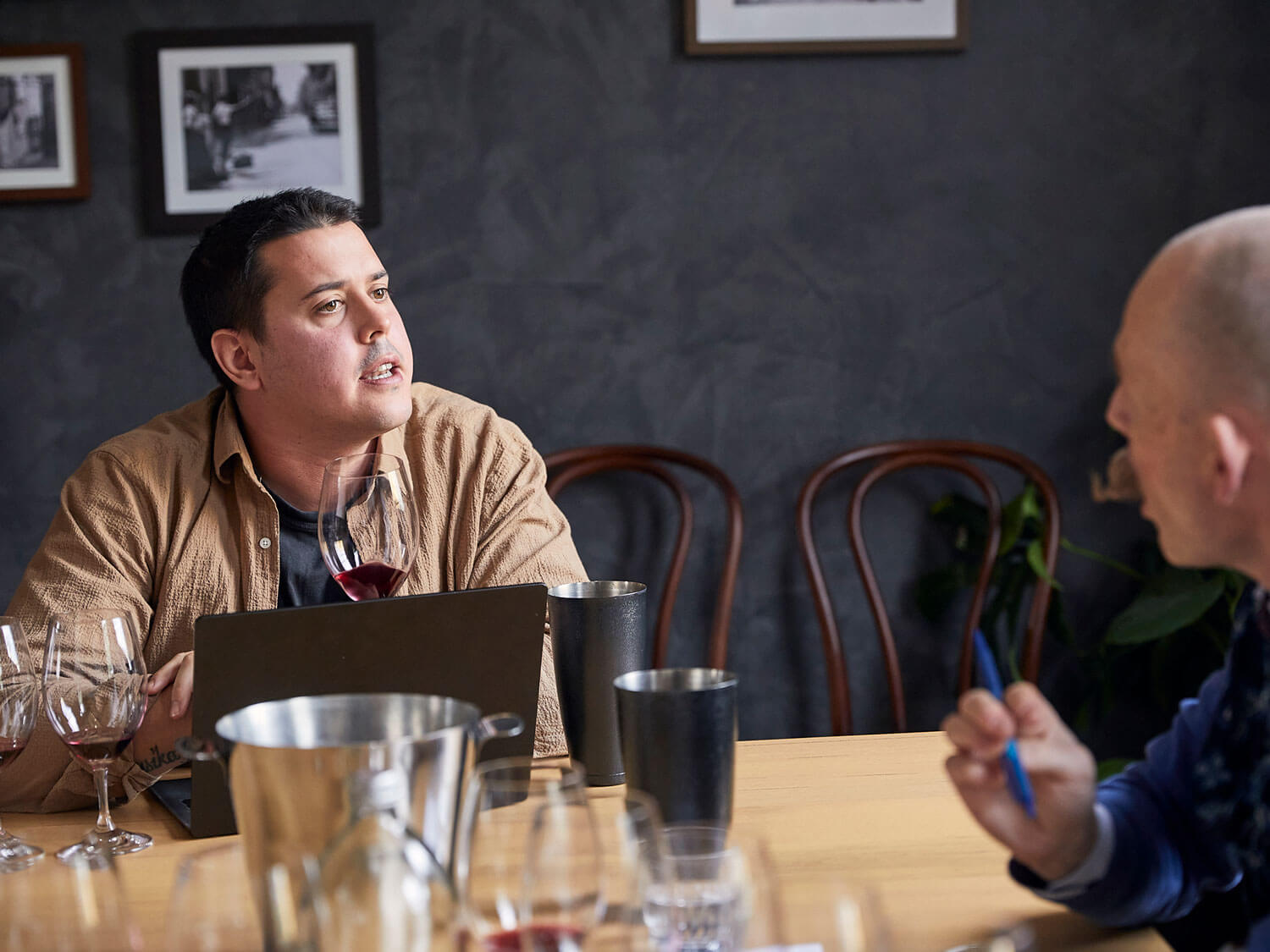
“For those that were light dry reds, I thought they were ‘progression wines’ going from the start of your barbecue chilled to being warmer later on. And that’s an exciting part of their appeal. There were clearly some wines that weren’t made to be chilled, but they were delicious chilled, and that makes it an even more exciting category for me, because we can mix and match.”
“Rosés are becoming paler, more delicate, more Provençal in style,” noted Purser. “Twenty years ago, they were more in that very light red vein, and this category has kind of filled in that spectrum.”
“Temperature is such an interesting and important variable in wine, and far more important than glass size,” added Kubis. “It was interesting to see how alcohol and tannin were affected and seeing how things changed when they were a bit warmer. Those that looked a bit rustic at room temperature, chilling certainly elevated them to being charming, but I think ones that had more tannin, chilling didn’t help.”
“The way I approached these wines was which ones were refreshing and delicious, and that I wanted to have another sip, another glass,” said Scarcebrook. “The ones I gravitated towards more were the ones that benefited rather than required a chill… What I will say is that light red wine doesn’t necessarily mean chilled red wine…”
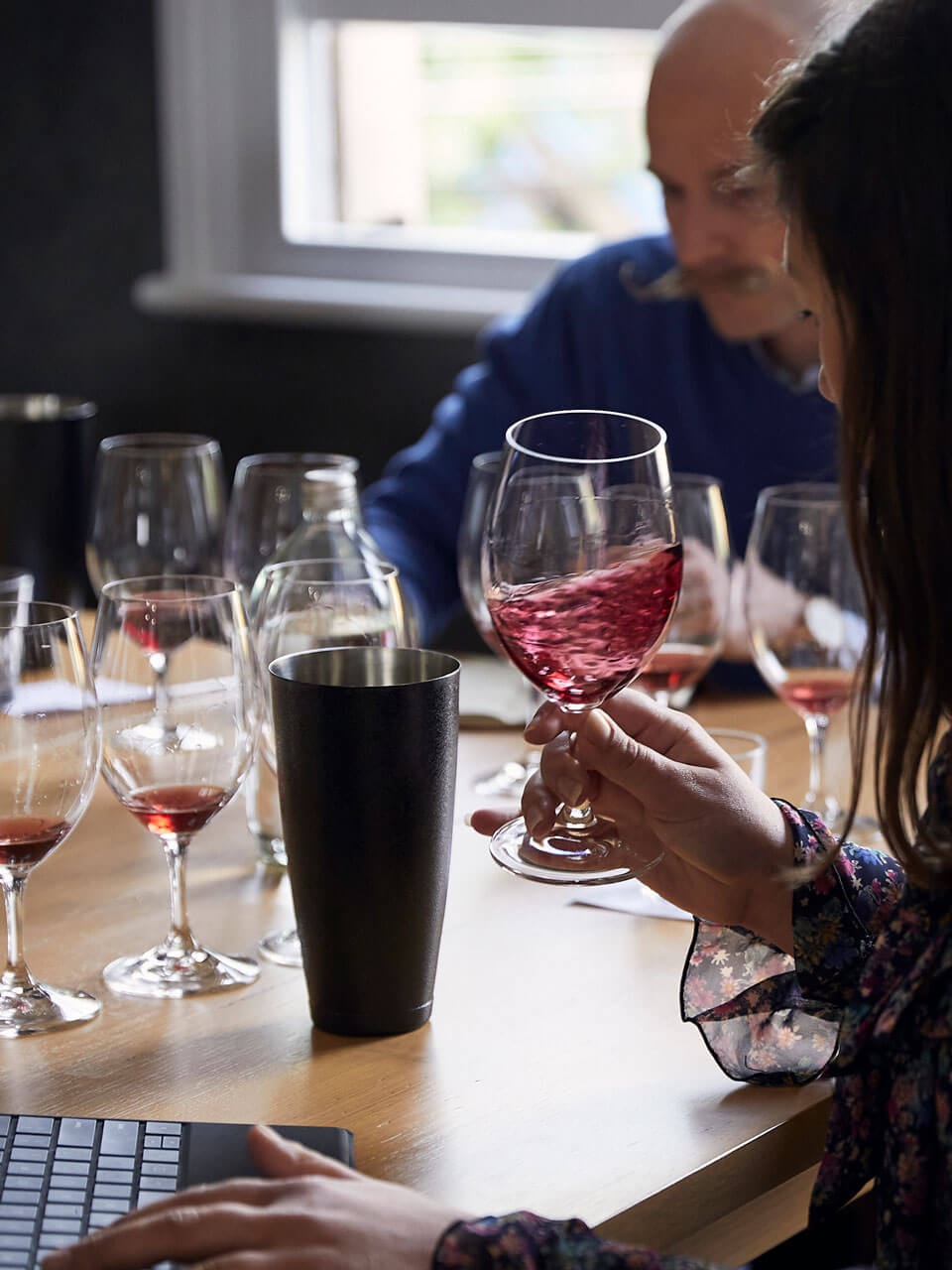
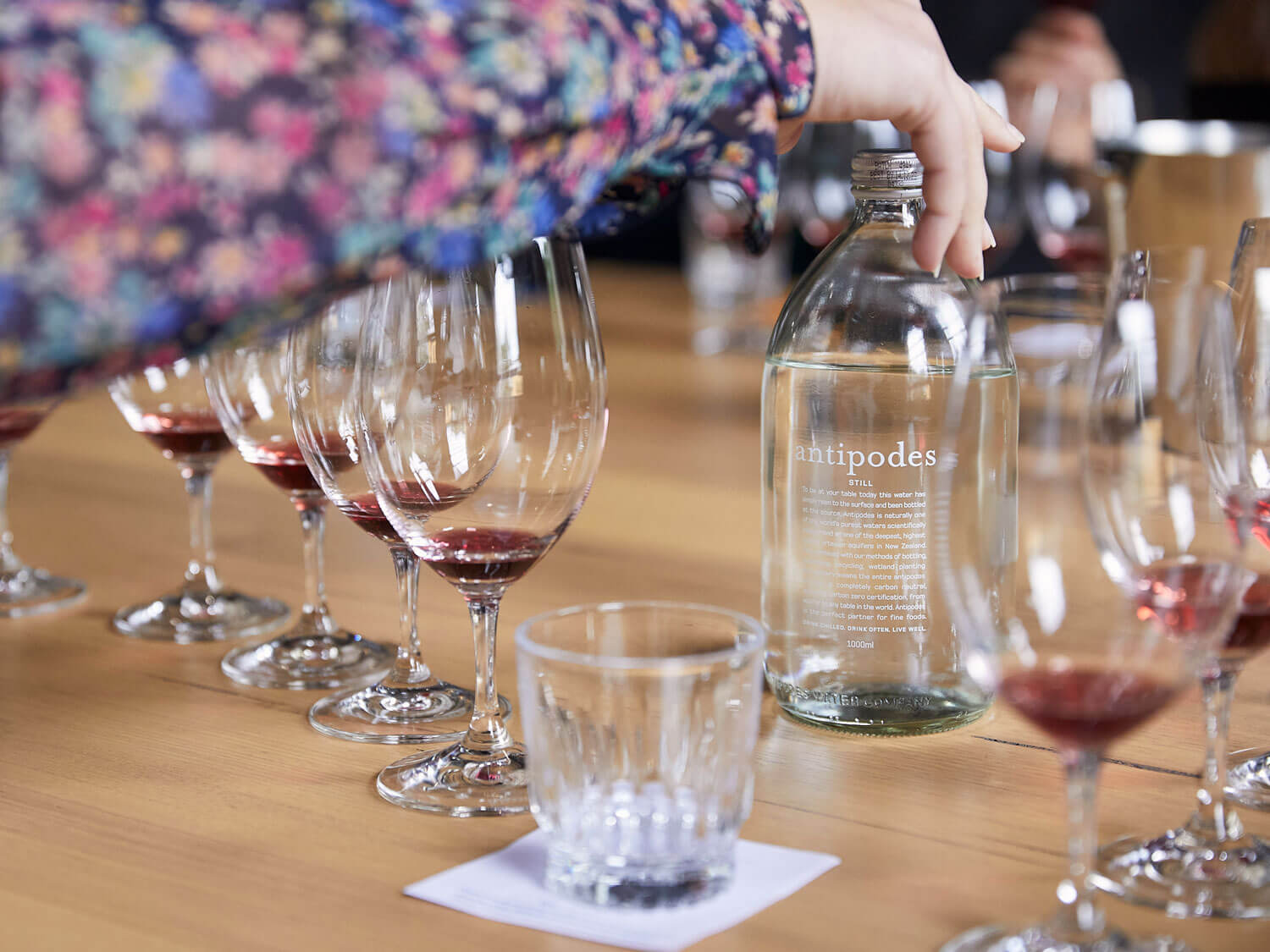
“There were red wines that were maybe a bit lighter, but then not necessarily, because the definition of a red wine has shifted recently, and serving those chilled added some charm but you definitely still saw tannin there that didn’t quite fit into the brief for me,” agreed Sokolin “And there were wines with oak that appeared a bit less appealing on that front. I tended to reward perfume and lift out of the glass…”
“I didn’t mind the oak in some, as it reminded me of a clafoutis, like a vanilla batter,” declared Brodtmann.
Vercoe laughed, “I had plum clafoutis!”
“I had cherry,” said Brodtmann.
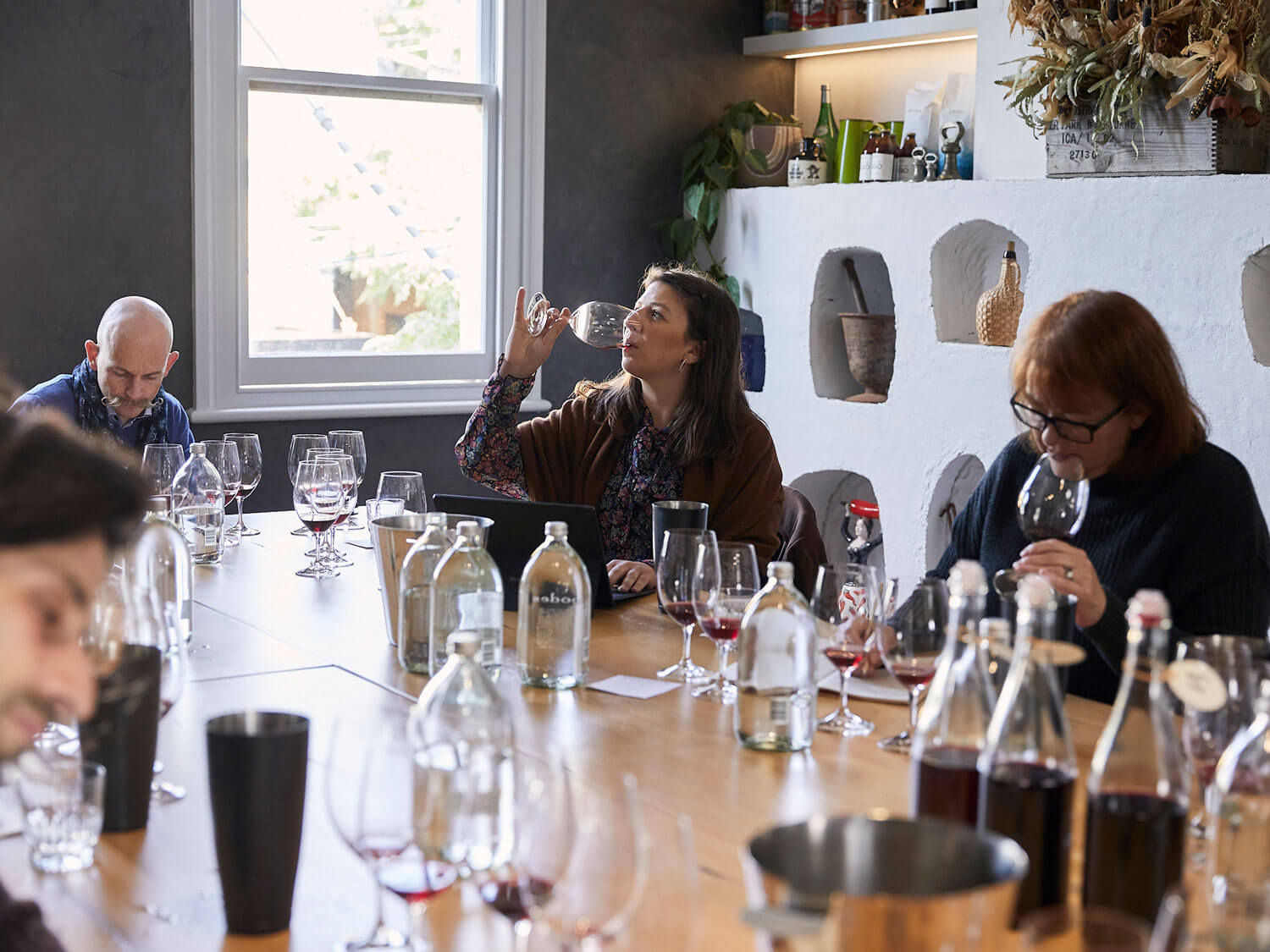
“Clafoutis was mentioned a bit!” Riemer added, but she noted that she was thinking about what she wanted to eat with the wines. “I even had roasted tomato clafoutis, things that you wouldn’t normally think of… I always come at it from food. I just can’t help it. As soon as I was tasting things, I had things like grilled cabbage and smoked lamb… a good duck bánh mì… Some were bringing out more grill flavours, and others more smoky flavours… there was fruitcake that I wanted to eat… I was doing weird things like goat’s curd on fruitcake… I don’t normally get that, but maybe because they were cold, these were the things that I was thinking of eating. There were flavours that I wouldn’t normally put together, which I found really interesting. And I found it hard to pick a top six, but I found great, interesting food wines.”
“Many made me think of smoky meat dishes, like barbecue,” added Brodtmann.
“I think chilled reds work with any cooking over fire, whether Aussie or American barbecue, or roasting a whole pig,” agreed Scarcebrook. “I used to say that rosé was the perfect wine to bring to a barbecue, but I think chilled red is even more so.”
“Something we haven’t spoken about is how these wines lend themselves to really delicate foods,” added Reid. “We’ve spoken about duck today, but even things like tuna sashimi, and some of the wines we’ve seen today would really lend themselves to those delicate and refined flavours.”
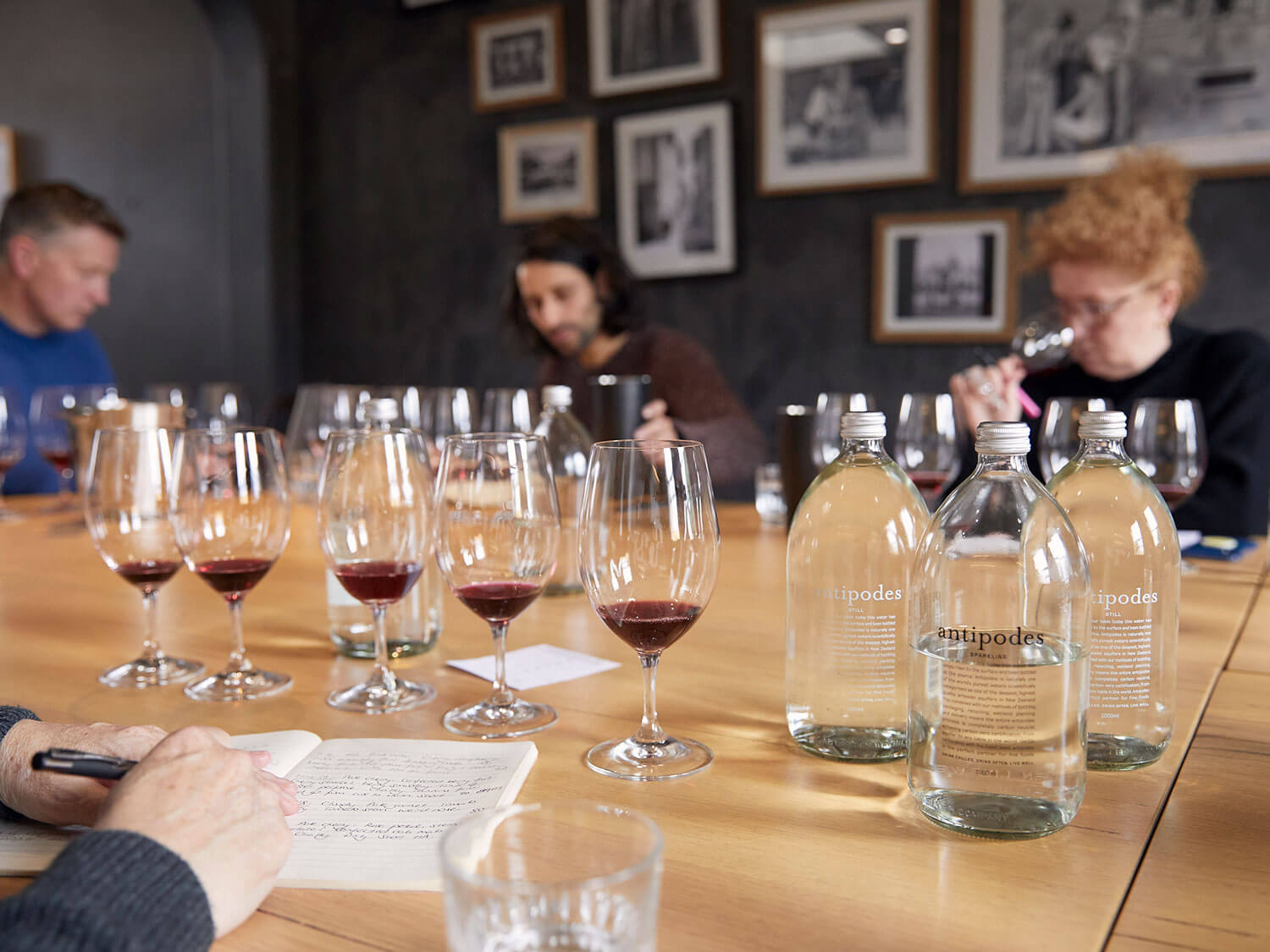
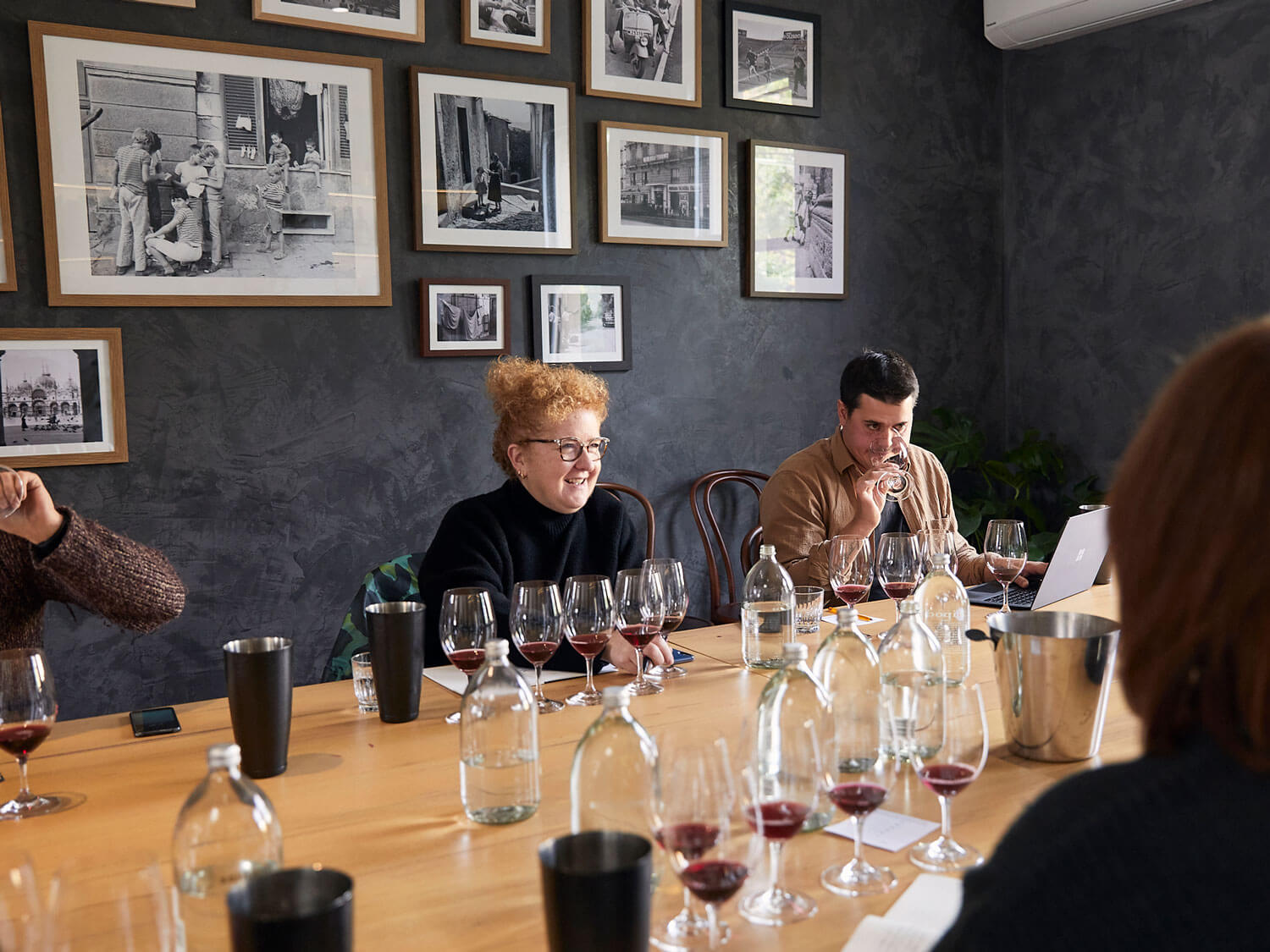
“The ones I gravitated towards more were the ones that benefited rather than required a chill… What I will say is that light red wine doesn’t necessarily mean chilled red wine…”
“I’ve certainly never sat down and tried 55 chilled reds,” laughed Purser. “The most I would have done is about five, and that wasn’t intentional, on a hot summer’s day in an Esky. I think you’re looking for a different set of criteria for what is delicious at a cold temperature. And it’s possibly something that is a pale and a bit dilute at a warmer temperature, but it looks great chilled, because it’s vibrant and has savoury qualities… and vice versa, with something that could be a bit heavy, you chill it down and it brings back the freshness. Some of those charming characters that become over the top as it gets warmer, you chill them down and they become really interesting. And it’s good to watch them warm up, as that’s a real-life situation, as the ice melts in the Esky, or whatever…”
“For me, it was hard to rank a top six in any orderly way,” said Kubis. “So, I just did it by sheer drinking pleasure. A lot of wines came up and they were really good wines, but they were overqualified for the job, for me in the park playing bocce!”
“There were wines where I wrote, drink don’t think, and then there were wines there that really needed food,” added Brodtmann.
“The wines we had, in terms of food and in terms of lifestyle, the term ‘park wines’ can really undersell the category,” noted Vercoe. “There were some really balanced wines in there… and it makes me think of chilled reds like Georgian amber wines, and how they have them over the course of their dinner. And you think of the duck bánh mì that Nicky mentioned, and you think about over the course of an Asian banquet, and with a good savoury, balanced chilled red wine, you don’t have to have a white, rosé and red to match the different dishes… it’s that allrounder that you can keep drinking… wines you can drink through the course of a meal if they’re savoury and balanced, and they’re perfect for Australian summers.”
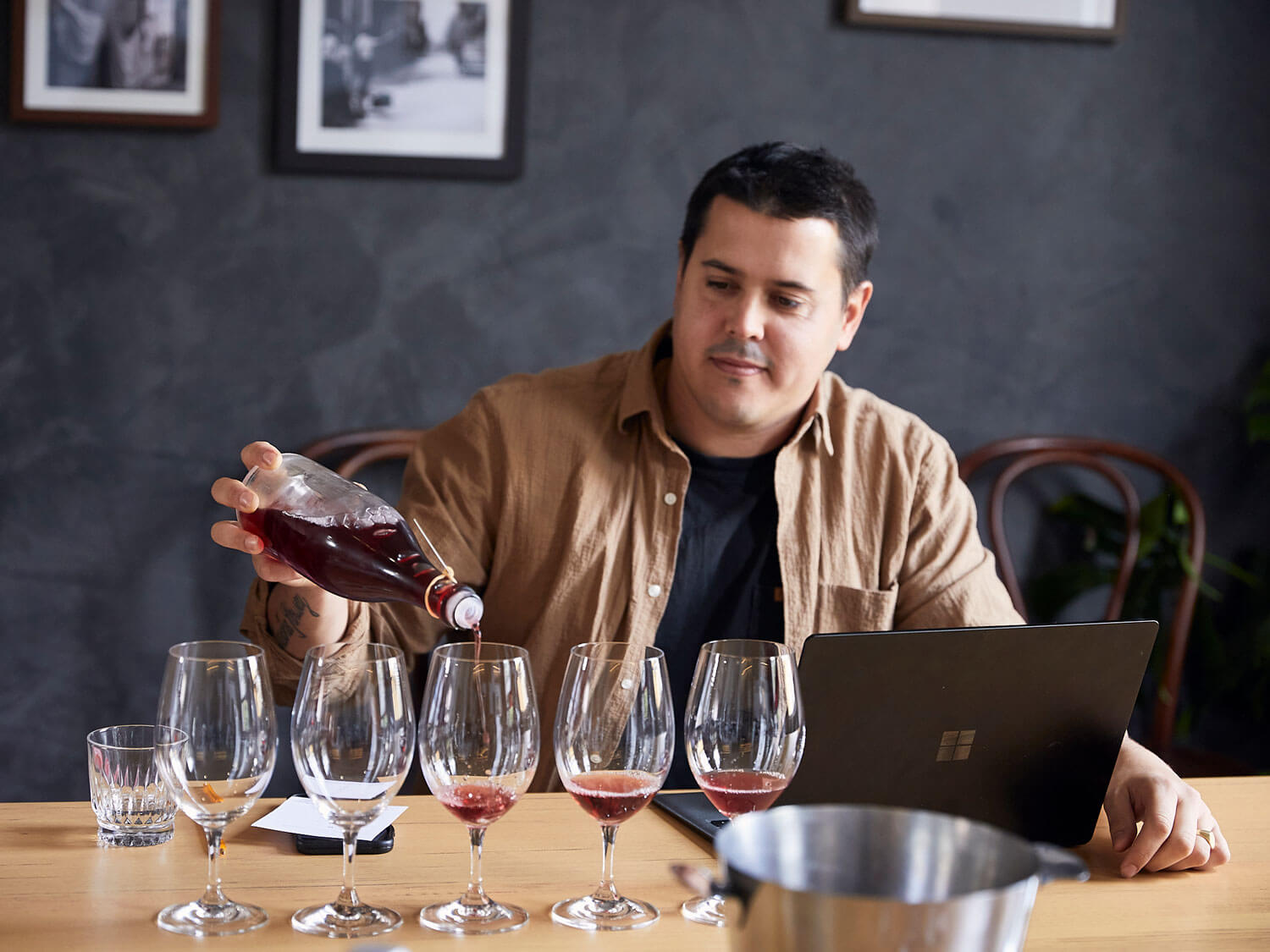
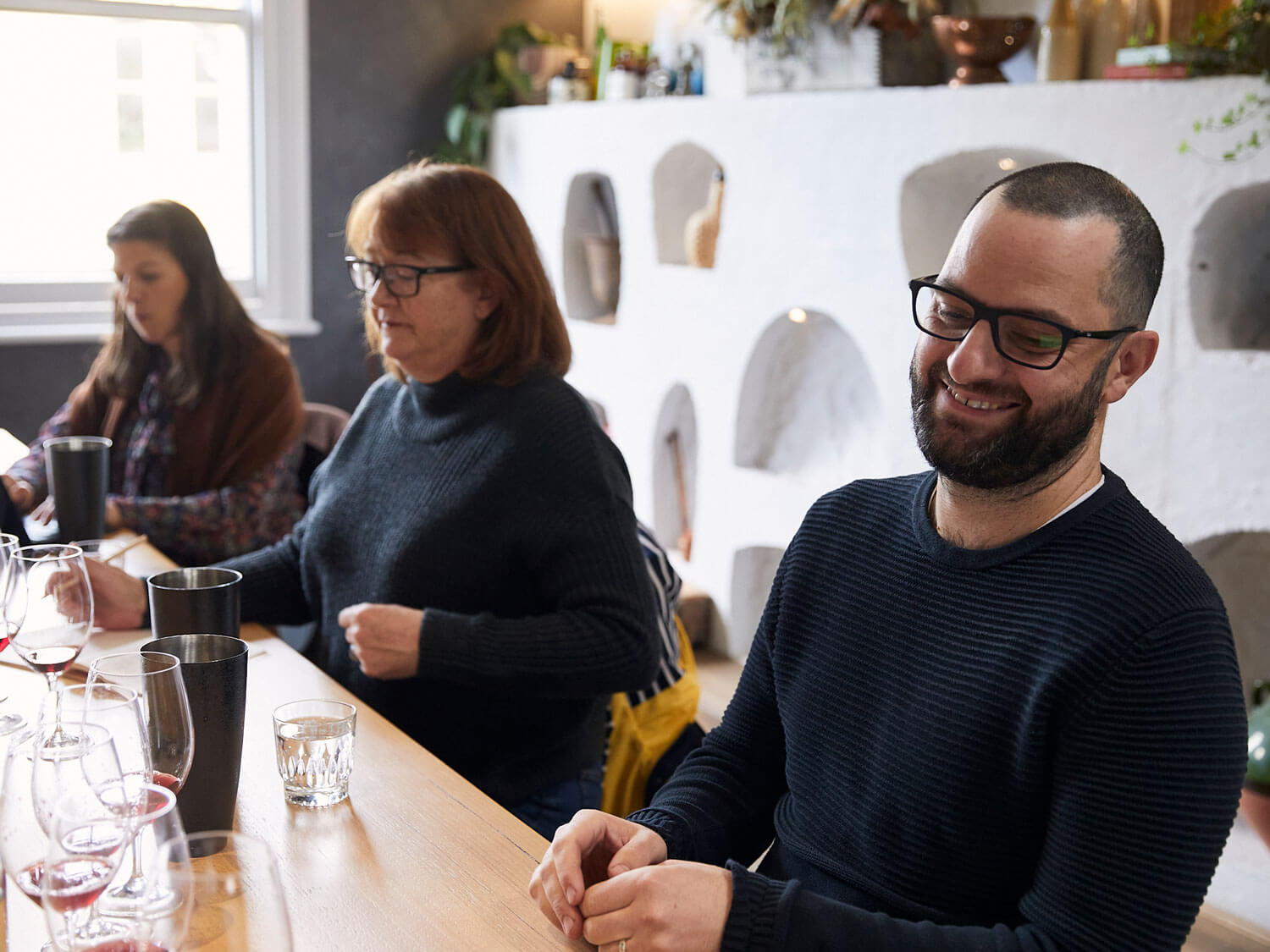
“Will we see a chilled red section on wine lists?” asked Scarecbrook.
“I already have it,” laughed Sokolin. “I think the broader lesson here is, don’t all reds benefit from a bit of chilling? By the time you pull it out of the fridge, it’ll be close to 10C by the time it hits the glass, and by the time you’ve finished the bottle, it will probably be close to room temperature.”
“They should be seen more at a wine bar, or on a restaurant menu, as a food match,” added Riemer. “They would really benefit from it. There’s often a rosé, then a weird gap, then usually a pinot…. I could see having charcuterie, particularly heavier charcuterie, where I would want a chilled red… or an escabeche… there were wines that I found would be so good with that.”
“No-one wants to party with room-temperature merlot.” Added Kubis “That’s not much fun. Going back to what James said about refreshment, that’s what these wines are about. It’s not just at dinner, but it’s at any time.”

Meg Brodtmann MW began her career as a medical research scientist before studying winemaking at Adelaide University. She worked internationally as a consultant winemaker throughout Europe and South America while also completing her Master of Wine qualification – the industry’s toughest test. Today, she is head of Education and Global Outreach at Rob Dolan Wines in the Yarra Valley.
Mitchell Sokolin left his native New York and a background in retail to pursue a career as a “vagabond winemaker”. The last 12 years with grapes have brought him long stints in Barolo, the remote western reaches of Spain, France, Ukraine, Georgia and of course Victoria, where he currently produces wine under the label, Eleven Sons. He is co-owner and manager of Gray and Gray in Northcote.
Nicola Reid graduated with a degree from University of Bristol in Politics and Spanish, before working as a sommelier in the UK while gaining her Yachtmaster qualifications. She worked on luxury sailing yachts around the world, taking her across the Atlantic and Pacific oceans. With her feet firmly back on the ground, Reid worked four vintages as a cellar hand between England and Australia before managing The Spanish Acquisition, Australia’s leading importer and distributor of Iberian wines. Nicola has experience judging domestically and has recently completed the WSET Diploma.
James Scarcebrook graduated from The University of Adelaide as a Master of Wine Business before a 16-month global wine adventure saw him visit ten wine-producing countries, including working two vintages in Germany. Scarcebrook has worked in fine-wine retail, as a representative for two leading importers, both with a focus on Italian wines, and now makes wine full-time under his Vino Intrepido label. That label is centred on Italian varieties and a quest for finding Victorian sites where they excel, teased out in a way that reflects on Italian tradition but seen through a new lens.
Justin Purser is the chief winemaker at Mornington Peninsula icon Stonier, having prior been the winemaker at Best’s Great Western for just over a decade. A graduate of the University of Adelaide with a Bachelor of Oenology, Purser has worked around the world, including at Brezza in Piedmont, and as a senior winemaker at Domaine de Montille in Volnay between 2008 and 2011. Purser is also a regular wine show judge.
Over the last decade, Lyndon Kubis has built a small empire of small wine bars. After working at Toorak Cellars for five years, he bought the business and has since expanded his armada of drink-in wine stores to include The Alps, The Hills, The Moon and Milton in Melbourne, and The Valley Wine Bar in Brisbane. He also owns online retailer, Diggin’ In The Cellars.
Nicky Riemer is the Head Chef at Bellota Wine Bar. Having trained under Stephanie Alexander, Riemer was subsequently appointed Head Chef when Alexander opened Richmond Hill Café & Larder. In Hong Kong, Riemer ran the H One kitchen in the IFC tower, and was the Head Chef at the Melbourne Wine Room alongside Karen Martini, before opening her own restaurant, Union Dining, which she ran for several years to much acclaim. Nicky hosts cooking classes at Essential Ingredient and at The NEFF Market Kitchen, and she is also a judge for the ‘delicious.’ Annual Produce Awards.
James Vercoe started his career in wine working in fine-dining restaurants in the UK. Back home, he ran the beverage programs at Port Phillip Estate and Paringa Estate on the Mornington Peninsula. After working for over a decade as a sommelier/beverage manager, Vercoe managed leading wine importer The Spanish Acquisition for three years, before going to work for Coles Liquor Group as the Sourcing Manager for Wine. Vercoe completed his WSET Diploma in 2018 and is currently an MW student. Vercoe also judges at domestic wine shows.
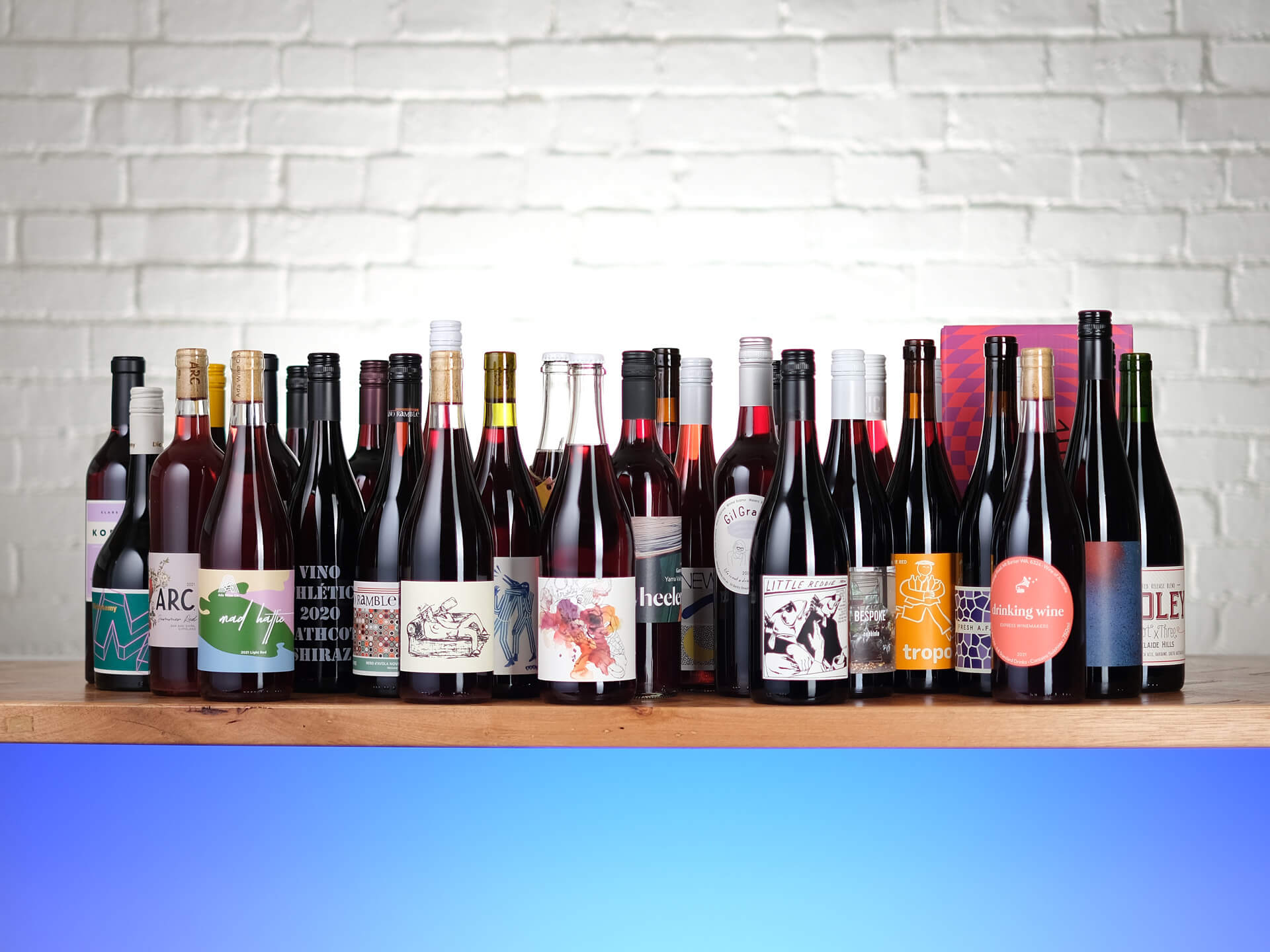
Please sign in or create account as candidate to bookmark this job
Please sign in or create account to save this search

Please sign in or create account as candidate to create a resume
